#Great Atlanta fire of 1917
Photo


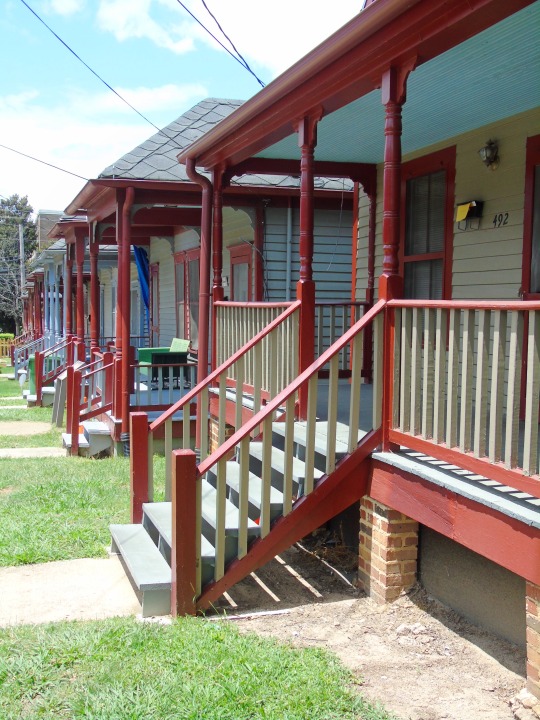
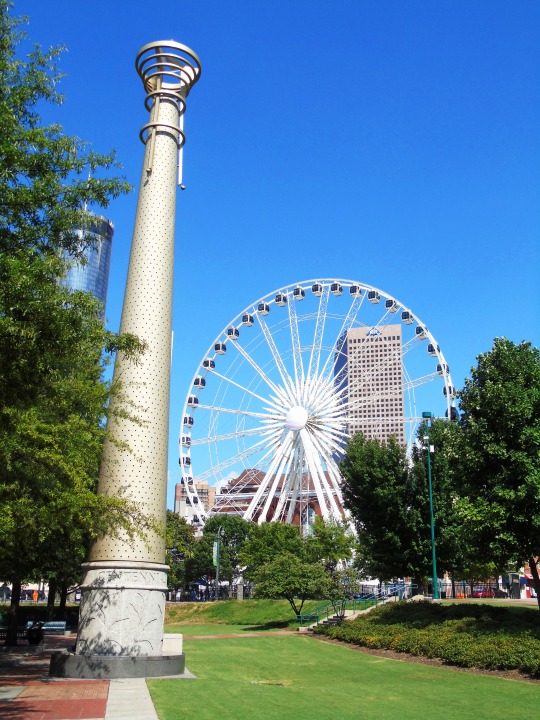





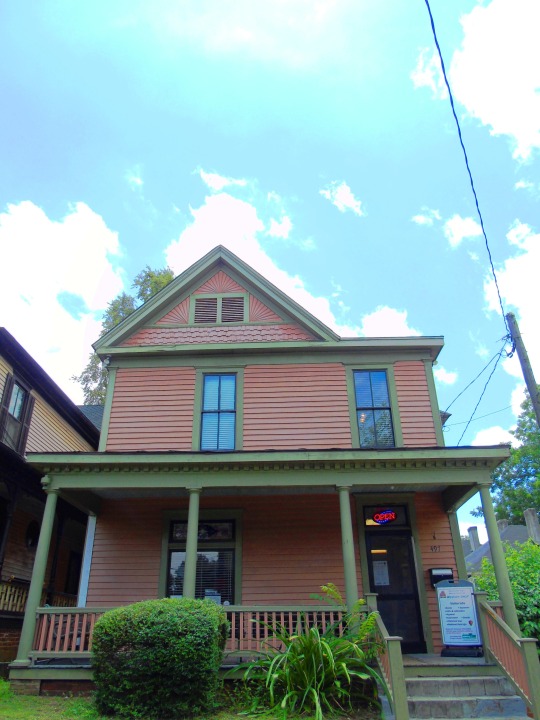
The Great Atlanta fire of 1917 (21st May) causes $5.5 million in damages, destroying some 300 acres including 2,000 homes, businesses and churches, displacing about 10,000 people but leading to only one fatality (due to heart attack).
#Centennial Olympic Park#Martin Luther King Jr. National Historic Site#Atlanta#The Martin Luther King Jr. Center for Nonviolent Social Change#Georgia#USA#Historic Ebenezer Baptist Church#FlatironCity#World of Coca-Cola#Walton Spring Triangle#Great Atlanta fire of 1917#21 May 1917#US history#anniversary#architecture#cityscape#tourist attraction#landmark#summer 2016#original photography
0 notes
Text
Events 12.7 (before 1950)
43 BC – Marcus Tullius Cicero is assassinated in Formia on orders of Marcus Antonius.
574 – Byzantine Emperor Justin II, suffering recurring seizures of insanity, adopts his general Tiberius and proclaims him as Caesar.
927 – The Sajid emir of Adharbayjan, Yusuf ibn Abi'l-Saj is defeated and captured by the Qarmatians near Kufa.
1703 – The Great Storm of 1703, the greatest windstorm ever recorded in the southern part of Great Britain, makes landfall. Winds gust up to 120 mph, and 9,000 people die.
1724 – Tumult of Thorn: Religious unrest is followed by the execution of nine Protestant citizens and the mayor of Thorn (Toruń) by Polish authorities.
1732 – The Royal Opera House opens at Covent Garden, London, England.
1776 – Gilbert du Motier, Marquis de Lafayette, arranges to enter the American military as a major general.
1787 – Delaware becomes the first state to ratify the United States Constitution.
1837 – The Battle of Montgomery's Tavern, the only battle of the Upper Canada Rebellion, takes place in Toronto, where the rebels are quickly defeated.
1842 – First concert of the New York Philharmonic, founded by Ureli Corelli Hill.
1904 – Comparative fuel trials begin between warships HMS Spiteful and HMS Peterel: Spiteful was the first warship powered solely by fuel oil, and the trials led to the obsolescence of coal in ships of the Royal Navy.
1917 – World War I: The United States declares war on Austria-Hungary.
1922 – The Parliament of Northern Ireland votes to remain a part of the United Kingdom and not unify with Southern Ireland.
1930 – W1XAV in Boston, Massachusetts telecasts video from the CBS radio orchestra program, The Fox Trappers. The telecast also includes the first television advertisement in the United States, for I.J. Fox Furriers, which also sponsored the radio show.
1932 – German-born Swiss physicist Albert Einstein is granted an American visa.
1936 – Australian cricketer Jack Fingleton becomes the first player to score centuries in four consecutive Test innings.
1941 – World War II: Attack on Pearl Harbor: The Imperial Japanese Navy carries out a surprise attack on the United States Pacific Fleet and its defending Army and Marine air forces at Pearl Harbor, Hawaii. (For Japan's near-simultaneous attacks on Eastern Hemisphere targets, see December 8.)
1942 – World War II: British commandos conduct Operation Frankton, a raid on shipping in Bordeaux harbour.
1944 – An earthquake along the coast of Wakayama Prefecture in Japan causes a tsunami which kills 1,223 people.
1946 – A fire at the Winecoff Hotel in Atlanta, Georgia kills 119 people, the deadliest hotel fire in U.S. history.
1949 – Chinese Civil War: The Government of the Republic of China moves from Nanjing to Taipei, Taiwan.
0 notes
Text
Sunday, May 01, 2022 Canadian TV Listings (Times Eastern)
WHERE CAN I FIND THOSE PREMIERES?:
THE REAL HOUSEWIVES OF ATLANTA (Slice) 8:00pm
NAKED AND AFRAID XL (Discovery Channel Canada) 8:00pm
THE COLOR OF CARE (Smithsonian Channel) 8:00pm
VICE (Crave) 8:00pm
I LOVE THAT FOR YOU (Crave) 8:30pm
STANLEY TUCCI: SEARCHING FOR ITALY (CNN) 9:00pm
NOMAD WITH CARLTON MCCOY (CNN) 10:00pm
ZIWE (Crave) 11:00pm
WHAT IS NOT PREMIERING IN CANADA TONIGHT
DUNCANVILLE (FOX Feed/Premiering on May 08 on City TV at 7:00pm)
RIDLEY ROAD (PBS Feed)
THE FAST HISTORY OF... (Premiering on May 02 on History Channel Canada at 10:00pm)
WELCOME HOME NIKKI GLASER? (Premiering on May 02 on E! Canada at 10:00pm)
ALOHA WITH LOVE (Premiering on May 07 on Super Channel Heart & Home at 8:00pm)
LOST CITIES OF THE JUNGLE (TBD - Science)
NEW TO AMAZON PRIME CANADA/CBC GEM/CRAVE TV/DISNEY + STAR/NETFLIX CANADA:
AMAZON PRIME CANADA
21 GRAMS
THE BOURNE LEGACY
THE BOURNE SUPREMACY
THE BOURNE IDENTITY
THE BOURNE ULTIMATUM
CRIMSON PEAK
FIFTY SHADES OF GREY
HEIST
JASON BOURNE
MERCURY RISING
UNBROKEN
VOLCANO
WHEN LOVE HAPPENS AGAIN
CBC GEM
ASK DR. RUTH
GAME SAVERS
HICCUPS & HOOKUPS
OUTBACK RABBIS
PROSECUTING EVIL: THE EXTRAORDINARY WORLD OF BEN FERENCZ
THE SIX: TITANIC’S LAST SECRET
CRAVE TV
VICE (Season 3, Episode 1)
NETFLIX CANADA
1917
40-LOVE
BASIC INSTINCT
BLIPPI WONDERS (Season 1)
BRIDGET JONES’S BABY
CASPER
CRANK
CRANK 2: HIGH VOLTAGE
DIARY OF A MAD BLACK WOMAN
DOLITTLE
THE HATEFUL EIGHT
THE HUNT
KUNG FU PANDA 3
MOLLY’S GAME
SEED OF CHUCKY
IIHF WORLD UNDER 18 CHAMPIONSHIP
(TSN) 8:30am: Bronze Medal
(TSN) 12:30pm: Gold Medal
NBA BASKETBALL PLAYOFFS
(SN1) 1:00pm: Bucks vs. Celtics - Game #1
MLB BASEBALL
(SN) 1:30pm: Astros vs. Jays
(SN Now) 2:00pm: Yankees vs. Royals
(SN1) 4:00pm: Tigers vs. Dodgers
(TSN2) 7:00pm: Phillies vs. Mets
NHL HOCKEY (TSN3) 2:00pm: Kraken vs. Jets
ALL CREATURES GREAT AND SMALL (CBC) 7:00pm (SEASON FINALE): It's Christmas in Darrowby and Helen and James realize they haven't agreed on where they're spending Christmas Day; a beloved local pet falls ill.
THE FABULOUS SHOW WITH FAY AND FLUFFY (Family Channel Jr.) 7:00pm/7:10pm: Fay and Fluffy talk about how sometimes people do things others may think are odd, but when it comes to being a good friend and making new ones, it's best to ask questions and get to know them better. In Episode Two, Fay and Fluffy explore the magic of music; special guest Sook-Yin Lee comes to visit and leads an interactive jam session with everyday items, showing that anyone can make music with anything.
FIRE MASTERS (Food Network Canada) 7:00pm: Three chefs bring their signature dish in the Wildfire Round; in the Crossfire Round, it's stout versus IPA.
SHERLOCK (CBC) 8:00pm: A whirlwind adventure and the return of arch-nemesis Moriarty lead John to believe that Sherlock is dead.
PORTRAIT ARTIST OF THE YEAR (Makeful) 9:00pm: Barry Humphries
MLS SOCCER (TSN5) 10:00pm: LAFC vs. Minnesota
VERACITY: YONGE STREET RIOTS (City TV) 10:00pm
ISLAND OF BRYAN (HGTV Canada) 10:00pm: The Baeumlers encounter roadblocks with the build as they look towards an uncertain living situation; Bryan's parents visit Florida.
THE CURSE OF OAK ISLAND (History Canada) 10:00pm: Marty Lagina makes an incredible discovery on Oak Island; on the other side of the Atlantic, Rick finds evidence that could tie the Knights Templar to the construction of the Money Pit.
LANDSCAPE ARTIST OF THE YEAR (Makeful) 10:00pm (SEASON PREMIERE): Joan Bakewell and Frank Skinner find the nation's best landscape painter.
CAL FIRE (Discovery Channel Canada) 10:00pm (SERIES PREMIERE): The first major fire of the year erupts in Southern California, and engineer Dudley risks missing his daughter's birthday; in Redding, Station 43 gets a call to put down a fast-moving blaze in an area filled with dangerous power lines.
#cdntv#cancon#canadian tv#canadian tv listings#all creatures great and small#fire masters#sherlock#portrait artist of the year#veracity#island of bryan#the curse of oak island#hockey#nba basketball#mlb baseball#nhl hockey#mls soccer
0 notes
Photo





Some major events that occurred on May 21.
Photo One: The beginning of Bloody Week in Paris as French troops invade the Paris Commune. By the time the week ends, 20,000 communards will be killed with an additional 38,000 arrested, 1871.
Photo Two: Clara Barton establishes the American Red Cross, 1881.
Photo Three: The Commonwealth War Graves Commission is established, 1917.
Photo Four: On the same day, the Great Atlanta Fire of 1917 takes place. By the time the fire ends, 300 acres are destroyed including 2,000 homes, businesses, and churches and displaces 10,000 people. One person is left dead, 1917.
Photo Five: In order to commit the perfect murder, University of Chicago students Richard Loeb and Nathan Leopold Jr. kill fourteen-year-old Bobby Franks, 1924.
#this day in history series#history#bloody week#paris commune#clara barton#american red cross#commonwealth war graves commission#world war 1#great atlanta fire of 1917#richard loeb#nathan leopold jr#bobby franks
0 notes
Text
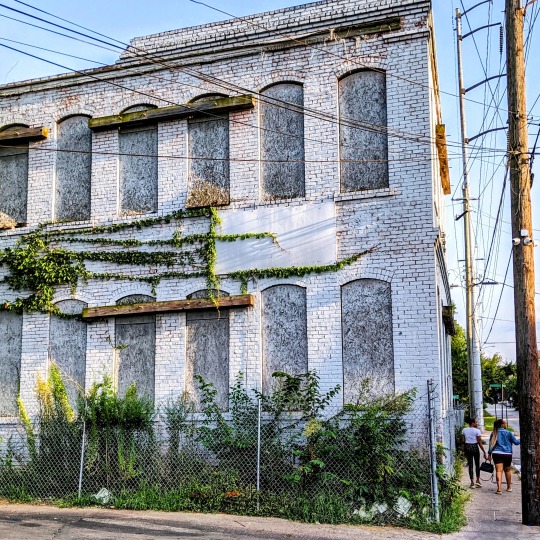
The Trio Laundry Building on Hilliard Street near Edgewood Avenue, built in 1910.
It's part of the local Martin Luther King Jr. Landmark District as well as a National Historic District.
When it was purchased by Atlanta Housing Authority in 2009, it appeared that this may become a wonderful renovation project -- possibly with a conversion to residential apartments.
Instead, nothing was done with the structure and it was left to rot. The roof collapsed some time in 2011. Because AHA failed to secure the building after the collapse, it became damaged by years of rain. This led to an attempted demolition in 2014.
Local architect Kyle Kessler heard about the demolition and sprang into action and successfully rallied folks into convincing the City to halt it.
This was an egregious case of 'demolition by neglect' involving a structure that's part of two historic districts. It was an important fight, and it should continue to be so in the future: our local institutions shouldn't be so irresponsible with their holdings, especially with their institutional money (AHA bought the site for $750k) and with property that's designated as historic.
Since then, a legal dispute over property holdings has prevented AHA from taking any steps to reuse the building.
The whole story of this site is one that reveals the many cracks in our local systems when it comes to oversight, responsibility, and also respect for historic districts. This building, which withstood the Great Fire of 1917 thanks to its state of the art sprinkler system, almost didn't withstand the negligence of local leaders.
But it's also a story of how successful local advocates can be in using these moments as a springboard for action and conversion.
Significantly, I feel like the concept of 'demolition by neglect' is more commonly known in Atlanta after the Trio incident. While we wait for a happy resolution for this building, that's at least some progress for Atlanta to have, and knowledge is power.
11 notes
·
View notes
Text
Heavy Hearted 💔
These past few days have been emotionally exhausting. As I think about what to share next my mind went numb because the men of my life weighed heavy on it. My father, brother, uncles, friends, men I’ve dated and ones I’ve loved. What caused the disconnect between us? How did we let them corrupt our minds with insecurities? I speak to your souls, while you speak to my goals. As loud as our laughters are, we continue to witness our neglect of one another. The dude that was in the movie “Dope,” (because I will not mention his name), said “[Rosa Parks could’ve used a black taxi service].” My Lord. And the “what’s the point of destroying property/your own community” folk...Chiiiiiiiiiiiile. The point I’m making is, I’ve only seen black men saying these things. Liiiikkkeeee, Huh?!? We go so freaking hard for y’all. Yet y’all still, even during a pandemic, where God granted you time to get {bleeping} REAL, you basically Stephen us? (Django reference for those of you like, who?, see how I got you?) I get it, you like who you like and you love who you love, but don’t forget we die too in hopes that you rise. We are lending you our hands because we see what your struggles are. We are putting our lives on the line for it. You come from us, so we feel your pain. It breaks my heart every single time you deny us of our Knight in Shining Armor moment. But as we often do, we dust ourselves off. As we speak out and voice our outrage/opinions, whatever side of the spectrum you may be on, I hope that we all can agree that the murders of black people these past few weeks (and every single one prior) are WRONG! We should all be outraged at the pure hatred, inhuman treatment, and vicious racial cycle of our very present and pure existence. When riots breakout after major sports games or firing of head coaches it’s depicted as an celebration or “weird riot.” Well, there was that one Cabbage Patch riot..... But, It’s happening now because WE ALL ARE TIRED! We can’t let this moment stop our way back to each other though. Black Wallstreet was real!!! Hell, I’m from Atlanta. Look up, The Great Atlanta Fire of 1917. Who do you think knows more of how effective destroying property is? By the way, it was noted that the city became more segregated after its reconstruction (Old Fourth Ward/Auburn Ave/Boulevard). Don’t let them use you to further help promote their agenda because we all know non-blacks have been recorded starting some of the riots/fires. Like come on people. We all need to recognize the root of the problem. Stop fueling their agenda to continue justifying their wrongs. I pray everyday for you! Say one for us too! Rest in Power & Peace George Floyd and Breona Taylor 💐❤️Don’t forget to Say her name.
5 notes
·
View notes
Text
Well I am back with another list. A few days ago I post my list of the best current directors of all time, and now it is time for the best films by decade. Sadly I have not had the chance to view a ton of films from the 1920's or 1930's, so I am combining the two decades and here are The 15 Best Films of the 1920's or 1930's
1. All Quiet on the Western Front: Sadly I have not seen a ton of films from the 1930’s and especially the 1920’s, but Lewis Milestone’s anti-war masterpiece All Quiet on the Western Front is easily the best film of the 1920’s or 1930’s. The story follows a young German Paul Bäumer during the mists of WWI as he is indoctrinated to ignite Paul’s patriotic fire and a romanticizing view of the war. Director Milestone deftly navigates the poignant story by showing the futility of war, and that the soldier ground is always the loser. I believe All Quiet on the Western Front was one of the if not the first Anti-War films. There have been many different types of anti-war films since, but view few have come close to the level of Milestone’s film and even fewer have reached the same level as All Quiet on the Western Front. All Quiet on the Western Front is one of the best if not the best war films made, and simple one of the best films of all time.
2. Battleship Potemkin: Battleship Potemkin is based on a true story that happened in the Black Sea on of course the Russian Battleship Potemkin during the brief 1905 Russian Revolution that were obvious early warning signs of what was to come in the 1917. After the Russians humiliating defeat to Japan in the Russo-Japanese war virtual total loss the Russia’s Pacific fleets the moral in Russia was at a all-time low. Then with the majority of Russia’s experienced commanders being transferred to the Pacific it was a recipe for disaster. It is a rich story that could be easily made into a film, and is done so masterfully by Sergei Eisenstein. I know most have seen a least a scene of the film through homages by other directors and in other films like the Untouchables, Star Wars: Revenge of the Sith, The Godfather and countless other film and television shows as Battleship Potemkin’s Odessa Steps scene is one of the most famous scenes in film history. That scene is the best scene in Battleship Potemkin for many reasons, but Sergei Eisenstein’s masterpiece should be known for more than that in that Potemkin is a masterfully crafted and filmed movie with a great story. Battleship Potemkin is a film any film buff should see.
3. Nosferatu: Bela Lugosi’s 1931 Dracula is the more famous film based on Bram Stoker’s acclaimed novel that truly launched the character into popular culture along with the likes of Frankenstein, The Mummy, Werewolf and many other iconic characters, and deservedly so as Bela Lugosi did a terrifyingly masterful job portraying Dracula. Still with that said F.W. Murnau’s Nosferatu is the better “Film”. Murnau’s film makes a few deviations to the Stoker’s story with the story taking place in Germany, the people who get their blood drained do not come back to life, and Dracula or Count Orlok in the film cannot move in any kind of sunlight. Even with those deviations from Stoker’s novel Murnau’s does a wonderful job crafting a terrifying story and villain in Max Schreck who truly looks the part of a vampire. With Munrau’s use deft use of camera work and lighting and Max Schreck’s performance created one of the best horror films of all time.
4. Mutiny on the Bounty: Mutiny on the Bounty is loosely based on historical event. Though Frank Lloyd’s does take some liberties with historical events like making Captain Bligh look like a tyrant his film is still gripping adventure drama with an outstanding performance by Clark Gable and Charles Laughton.
5. Frankenstein: The 1930’s was certainly the decade that launched so many horror characters into popular culture with three making this list. The first being the first talking picture adaptation of Mary Shelley’s classic novel in Boris Karloff’s 1931 Frankenstein. Mary Shelly’s story was already powerful enough, but Karloff’s sympathetic yet terrifying performance takes the Frankenstein to a whole new level.
6. Stagecoach: Let me get this out of the way I am not a fan of John Wayne both professionally or as a person through his views of the world. There are only a handful of John Wayne’s I truly enjoyed and usually Wayne is the least of the reasons I like a film he is in. That is the same for Stagecoach as I give way for credit the brilliance of this western to John Ford’s brilliant directing, and rest of the cast that includes John Carradine, George Bancroft, and Claire Trevor. I do not think I would put Stagecoach in the top 10 westerns of all time, but definitely in the top 20.
7. Gone with the Wind: I am not sure what else is to say about Gone with the Wind as the film is the most famous and iconic film on this list. Gone with the Wind has not aged well in some people’s views when it comes to the portrayal of the south during the Civil War and Blacks and I can understand, but the film still is a great film. Gone with the Wind has a compelling story and memorable characters thanks to performances by Clark Gable, Olivia de Havilland, Leslie Howard, Vivien Leigh, and future Superman George Reeves. The set sequences are beautifully filmed especially the burning of Atlanta and the score it well done. Gone with the Wind has also delivered some of the most quotable lines in film history with one being one of the best lines in film history.
8. Dracula: I am not going to go into Dracula much as I briefly talked about the film during my talk about Nosferatu. Bela Lugosi’s Dracula is a masterful horror film that made Count Dracula one of the most iconic characters in popular culture and really launched the horror to another.
9. The Informer: Director John Fords 1935 Irish War for Independence drama. Though The Informer had at the time a little known cast and even more unknown cast at the time the actors performed well, and tragic tail of a down on his luck ex-IRA Irishman is extremely well written. It also helps that RKO pictures at the time, and is still one of the best film composers in Max Steiner composing the music for The Informer.
10. The Mummy: 1932’s The Mummy is the third and final monster/horror film on this list. While not on the level of the other three horror films on this list The Mummy is still a thrilling horror film with once again a power performance by the great Boris Karloff as the Mummy.
11. Mr. Smith Goes to Washington: The late Jimmy Stewart launched to stardom mainly through this political drama. Stewart stars as a young naïve politician Jefferson Smith trying to make a difference in his state and in the United States, but his slowly beat down by the corrupt system and his one man fight against it. There is a hopeful yet pessimistic view of politicians and the political system that is still very relevant today.
12. Blackmail: One of director Alfred Hitchcock’s earlier films, and I think the first British film with sound. Blackmail is a riveting thriller effortlessly created by Hitchcock’s screenplay and film technic. I would consider Blackmail one of Hitchcock’s best early films.
13. Metropolis: I usually am in the minority when it comes to modern critics of Metropolis, but I think it is one of the most overpraised films in history. Yes, for its time Metropolis is a visually outstanding, but so was Avatar, What Dreams May Come, Sucker Punch, and many other mediocre films. What is a better lasting legacy is the films message of caution against technology and the peoples growing reliance of technology on both man’s progress socially and psychology. I do think Metropolis is a good sci-fi film, but far from one of the best science fiction films in history.
14. Captain Blood: To be honest it was hard to fill this list especially the last few spots, but then I remembered the brief rise in Hollywood superstardom of Errol Flynn in the mid 1930’s to the mid 1940’s with two really good swashbuckling adventure films. Errol Flynn’s first starring role in Captain Blood is like the blockbuster of today as Captain Blood does have some great if not amazing set pieces and action sequences the story and performances are lacking.
15. The Adventures of Robin Hood: Errol Flynn was known for his charisma as a leading man and ladies’ man, which made Flynn the perfect choice for Robin of Locksley. This adaption of the Robin Hood is magnificently brilliant in story, set design and set pieces, and the action is thrilling. The chemistry between Flynn and Olivia de Havilland is palpable throughout the film. I will not say it is tragic as I know there are rumors of Errol Flynn’s night life with women which got him in trouble and rightly or wrongly ruined his reputation and perhaps Flynn’s career, but I will say that it is sad that Errol Flynn allowed his womanizing to basically ruin his career.
------------------------
The most overrated films of the 1920’s and 1930’s: The Wizard of Oz, King Kong, and Snow White and the Seven Dwarves.
#Movies#Films#John Ford#The Best Films of the 1920's#The Best Films if the 1930's#John Wayne#Dracula#Vampires#frankenstein 1931#Frankenstein#All Quiet on the Western Front#Errol Flynn#Clark Gable#Gone With the Wind#Nosferatu#Stagecoach#alfred hitchcock#War Films#Horror Films
4 notes
·
View notes
Text
Benjamin Mays
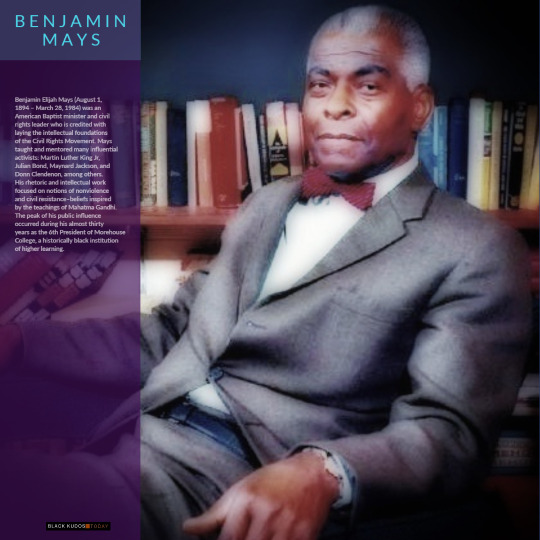
Benjamin Elijah Mays (August 1, 1894 – March 28, 1984) was an American Baptist minister and civil rights leader who is credited with laying the intellectual foundations of the Civil Rights Movement. Mays taught and mentored many influential activists: Martin Luther King Jr, Julian Bond, Maynard Jackson, and Donn Clendenon, among others. His rhetoric and intellectual work focused on notions of nonviolence and civil resistance–beliefs inspired by the teachings of Mahatma Gandhi. The peak of his public influence occurred during his almost thirty years as the 6th President of Morehouse College, a historically black institution of higher learning.
Mays was born in the Jim Crow South on a repurposed cotton plantation to freed sharecroppers. He traveled North to attend Bates College and the University of Chicago from where he began his career in activism as a pastor in the Shiloh Baptist Church in Atlanta, Georgia. After a brief career as a professor, he was appointed as the Dean of the School of Religion at Howard University in 1934 which elevated him to national prominence as a proponent of the New Negro movement. Six years later, Mays was elected as the president of Morehouse College, an at-the-time financially unstable enterprise. Over his tenure from 1940 to 1967, the college's financial endowment was doubled and enrollment quadrupled; it was established as a leading liberal arts college in the United States.
Due to the relative smallness of the college, Mays mentored and taught many students, most notably King. His connection with King spanned his early days at the college in 1944. King was known as Mays' "spiritual son" and Mays his "intellectual father." After King's famous "I Have A Dream" speech at the March on Washington for Jobs and Freedom on August 28, 1963, Mays gave the benediction. Upon the 1968 death of King, he was asked to give the eulogy where he described him in his "No Man is Ahead of His Time" speech. Mays stepped down from the presidency in 1967 continuing to work as a leader in the African American community. He presided over the Atlanta Board of Education from 1969 to 1978, where he initiated the desegregation of Atlanta.
Mays' contributions to the civil rights movement have had him hailed as the "movement's intellectual conscience" or alternatively the "Dean [or Schoolmaster] of the Movement". Historian Lawrence Carter described Mays as "one of the most significant figures in American history". Hundreds of streets, buildings, statues, awards, scholarships, grants, and fellowships are named in his honor. Numerous efforts have been brought forward to posthumously award Mays the Presidential Medal of Freedom as well as feature him on a U.S. postage stamp.
Early life
Early life and ancestry
Benjamin Elijah Mays was born on August 1, 1894 in Epworth, South Carolina, in the small town of Ninety Six, South Carolina, the youngest of eight children. His mother, Louvenia Carter Mays, and father, Hezekiah Mays, were born into slavery on Virginia and South Carolina plantations, respectively. Both were freed in their later lives with the passage of the 1863 Emancipation Proclamation. Mays' father often hit him, his siblings and Louvenia growing up, expressing anger about how he was treated by his master. The "Mays" family name was derived from their slaver and owner's name, Henry Hazel Mays; he owned 14 slaves in the same area. Hezekiah worked as a cotton sharecropper to generate income for his family.
Mays was told to be cautious of white people and exhibit black pride whenever possible growing up. Mays' older sister, Susie, began to teach him how to read before his formal schooling commenced, which gave him a year's growth in reading compared to the other students in his primary schools. School officials cited him as "destined for greatness." Growing up, he went by the nickname "Bennie" and was inspired by Fredrick Douglass, Booker T. Washington, and Thomas E. Miller. The Bible was influential to young Mays because he could see his name (of Biblical origins) mentioned frequently, instilling a feeling of empowerment within. During this time, Benjamin Tillman rose to power in South Carolina which saw to the redoubling of lynching and segregation in Mays' neighborhood. Throughout his tenure as governor, 18 black men were lynched and dozens were hurt in the 1876 shoot-off. On November 8, 1898, members of the Phoenix Riot–a white suprematist mob–rode up on horses to the Mays household, a repurposed cotton plantation. They drew their guns at Mays' father and told him to remove his hat and bow down to them. The event would stay with Mays throughout his life. A year later, white mobs and Ku Klux Klan members searched his house in search of relatives after local newspapers announced that cotton prices had plummeted.
Early education
In 1911, he was enrolled at the Brick House School in Epworth, a Baptist-sponsored school. He then transferred to the High School Department of South Carolina State College in Orangeburg. He graduated in 1916, aged 22 as its valedictorian. In high school, teachers often let Mays instruct parts of the mathematics curriculum to students in exchange for extra credit. He won awards for debate and mathematics. A teacher at the school had told Mays to seek graduate school at the University of Chicago as he thought the school would best nurture Mays' intellect. However, before attending graduate school Mays needed to seek an undergraduate education. His relatives and teachers forced him to attend a Baptist university–the Virginia Union University. He grew weary of the violence against blacks in Virginia so he sought the guidance of his academic advisors at Virginia Union. They advised him to look into schools in the North as they were typically seen as more prestigious, challenging, and prominent than those of the South.
Four professors at the university had attended Bates College in Lewiston, Maine and urged Mays to apply. However, its exacting standards prohibited him from attending. After a year more in Richmond, Mays elevated his grades to the top of his class and wrote personally to Bates president George Colby Chase. Chase granted him a full financial aid package and boarding upon hearing his story and reviewing his academic background. Virginia Union's president warned him that studies at Bates would be "too hard for a colored boy" and that he should stay in Virginia. Mays ignored his warnings and enrolled in 1917, aged 23. While at Bates he felt pressure to compete with "Yankees at the Yankee level" which drove him to dedicate him to his studies. He would write in a diary: "Yankee superiority was the gauntlet thrown down. I had to pick it up." Working to midnight weekly and arising at 4 AM, Mays excelled at Greek, mathematics, and speech. Although he would experience little racism in college, upon seeing The Birth of a Nation in a local cinema, the crowd cheered for the white slaver which frightened Mays. In college, he was captain of the debate team, played on the football team and served as the Class Day Speaker. He graduated with departmental honors with a B.A. in 1920. Contrary to popular writing and official college records, Mays never received Phi Beta Kappa; his attendance of a "school from the South" disqualified him.
Marriages
Shortly after graduation, he married his first wife, Ellen Edith Harvin, in August 1920 in Newport News, Virginia. The two met when Mays was still in South Carolina and wrote to each other frequently. She was a home economics teacher at a local college before she died after a brief illness two years after they married at age 28. He met his second wife, Sadie Gray, while working at South Carolina State College. After months of courtship, they married on August 9, 1926. Mays was secretive about his relationship with his second wife; he burned the majority of letters and correspondence between them.
Early academic career
On January 3, 1921, he then entered the University of Chicago as a graduate student, earning an M.A. in 1925. Early on in his academic career he decided to join Omega Psi Phi, a national fraternity for colored men. This organization was known for pooling resources and information among its members so Mays viewed it with great interest. Mays viewed it as "a mountain top from which he could see above and beyond". In 1924, upon hearing news that there was to be a fraternity meeting in St. Louis, Missouri, Mays traveled by train. However, his decision to travel first class from Birmingham to St. Louis was indirectly against the Jim Crow laws. The ticket salesman only sold Mays a ticket when he lied about who it was for. While riding to St. Louis, the Pullman warned Mays that he was risking his life by sitting in first class and that he should get off at the next stop. Shortly after, three white men, guns drawn, escorted Mays into a car in the back known as the "Jim Crow car". He eventually made it to the Omega Psi Phi meeting, where he spoke of his experience.
To finance his time in university, Mays worked as a Pullman Porter, a railway assistant. Much of the money he had earned growing up was spent financing his time at Bates, on Christmas Day 1921, Mays held only $45 dollars ($587 in 2018 USD). Mays began labor organizing to increase his wage, which was seen negatively by the Porter managers. Although he legally established a labor group for Pullman Porters, he was fired from his job for "attracting too much attention to labor rights." His time at the University of Chicago was marked by segregation. He was asked to sit at the colored area in the dining halls and was only allowed to use certain rooms for reading. Mays tolerated the segregation with the mindset that he was "only there to get a degree, to convince another brilliant set of Yankees that he could do their work." Although he was licensed to preach in 1919, he was officially ordained a Baptist minister in 1921. During this time he encountered John Hope, the current president of Morehouse College. Hope spoke to Mays about the lack of "a fine education for the colored in Atlanta". Mays traveled to Atlanta in 1921 and served as a pastor at the Shiloh Baptist Church until 1923. In March 1925, Mays was award an M.A. in religious studies from the university. Upon receiving his master's degree, he wrote to the pastorate with his intention of resigning to pursue a doctorate in the coming years. However, due to his financial status, he took up a teaching position instructing English at South Carolina State College from 1925 to 1926. Mays left his teaching position after routinely clashing with other faculty over grade inflation and academic standards.
From 1928 to 1930, he worked as the national student secretary of the Young Men's Christian Association (YMCA). A couple of months later, he was asked to serve as the director of Study of Black Churches in the United States by the Institute of Social and Religious Research of New York. In 1932, Mays returned to the University of Chicago with the intent of completing a Ph.D. in line with what was asked by the Institute of Social and Religious Research of New York. After some deliberation between fields of studies he could pursue a doctorate in he eventually decided to study religion and not mathematics or philosophy. Mays also worked as a student assistant to Dr. Lacey Kirk Williams, pastor of Olivet Baptist Church in Chicago and President of the National Baptist Convention. In 1933, he wrote his first book with Joseph Nicholson, The Negro's Church. It was the first sociological study of the black church in the United States and was submitted to the university faculty as his dissertation in 1935. Historian John Herbert Roper estimates that Mays was one of 20 African Americans so earn a doctorate during that year.
Howard University
Shortly after receiving his doctorate, he was called by the presidents of multiple universities to lead their religion departments. Mays chose to accept a position at Howard University in Washington as its dean of religious studies. He was instructed to build up the department and establish a reputation for well-trained ministers. Mays first renovated its library and secured loans from the federal government to expand it. His second objective was to separate the federally-funded portions of Howard University from the new school of religion. At the time, the university was partially funded by the U.S. Department of the Interior which prohibited funding to religious enterprises. After he successfully removed the School of Religion from the auspices of the federal government he was tasked with securing funding from wealthy donors from the North.
Mays secured a multi-million dollar package from donors by 1930, and was averaging yearly contributions of $750,000 during the Great Depression. The expanding Department of the Interior under Franklin D. Roosevelt, coupled with Mays' fundraising led to unprecedented growth at the university. Salaries for professors increased, new dorms were built and refurbished, the library Mays had been developing was completed, and new lecture halls were established. In 1938, he published his second book, The Negro's God as Reflected in His Literature. In 1939, he secured a large collection of theology books for his new library which prompted the American Association of Theological Schools to accredit the new School of Religion. During this time Mays developed a reputation for exacting standards and elitism. He was a vocal opponent of the notion that black men are inherently more violent than their white counterparts in universities. He was a vocal proponent of the New Negro movement and frequently lectured about its foundlings and applications.
In January 1940, Mays was secretly approached by, John Hervey Wheeler, a trustee of Morehouse College, to see if he was interested in an upcoming search for the college's next president. Wheeler told Mays that the school had a tough time with getting tuition payments out of the students, growing their endowment, and establishing national prominence. Mays expressed interest in the position but Wheeler cautioned him about the odds of him actually being offered the job. On March 10, 1940, Mays was offered the presidency of Morehouse by its trustees; he moved to Atlanta shortly after. When Mays left Howard University, he was honored with the renaming of the newly constructed home of the divinity school to "Benjamin Mays Hall."
Meeting with Gandhi
In 1936-37, Mays traveled to Mysore, India, where, at the urging of Howard Thurman, a fellow professor at Howard, he spoke at some length with Mahatma Gandhi. The two spoke for an hour and a half about the realities and powers of militant pacifism which he used to shape his civil rights ideology and practice. Mays asked Gandhi about the influence nonviolence had in his life and what his personal thoughts were on the caste system in India. Gandhi told Mays that there was never an instance where violence was acceptable especially that which was undertaken in retaliation. He was told that "one must pay the price for protest, even with one's life". In response to the caste system. Gandhi believed that there those with darker skin were not inherently untouchable but labeled it a "necessary economic injustice".
Morehouse College, 1940–1967
Early years
Mays was offered the presidency on March 10 and inaugurated the sixth president on August 1, 1940. Upon his assumption of the presidency, the school was in severe financial distress. In his first speech to an incoming freshman class in 1940, he said, "If Morehouse is to continue to be great; it must continue to produce outstanding personalities." Mays set out to improve the training of Morehouse men, increase enrollment, grow its endowment, and collect tuition payments.
Many associated with the college referenced him as a "builder of men." To improve the training of Morehouse men, Mays set out to advance a new curriculum based on the New Negro movement. He specifically wished to increase the training of black physicians, ministers and lawyers. Although Morehouse College was not a medical, law, or ministry school, it was a feeder institution into them so Mays took the preparation of his students into these schools seriously.
Financial planning
During his first three months nothing was planned to be or currently being constructed on campus. Mays had inherited "mountains of uncollected student bills" which served as a threat to the liquidity of the college. In 1933, Morehouse was doing so poorly financially that it had allowed Atlanta University to take over its financial direction and budget. He earned a reputation for being a penny-pincher and demanded tuition fees on time, which earned him the nickname "Buck Bennie;" the student newspaper occasionally ran headlines such as "Buck Bennie Rides Again," during the first couple of years of his Morehouse presidency. However, he often helped students pay their bills by offering work or finding it around campus. He would write to the employers of the college's graduates to ask them how the recent grads were doing as a way to measure the Morehouse education. Within two years of his presidency, Mays was so successful that he was able to regain control of Morehouse's finances.
Effects of World War II
Soon after primary advancements were made with the college, World War II broke out and many students were drafted for military service. The Chairman of the Board of Trustees of Morehouse approached Mays and requested the school be shut down for the remainder of the war, which prompted Mays to lash out and reject his proposition publicly. Mays counter-proposal was to open the school to younger students who were ineligible to be drafted. He moved to improve the academic quality of the students by lowering admissions rates, and reforming the academic platform. College faculty often were encouraged to befriend students and provided them with guidance in a tumultuous social scene at the time.
Recognition
The introduction to his speech compilation at Morehouse notes him with the following:
In physical stature Mays stood six feet tall, but appeared taller because of his erect posture--a habit he developed during his youth to walk around with dignity and pride; he weighted approximately 180 pounds and had a full head of iron-grey air with a contrasting dark complexion. His distinctive physical appearance commented his towering intellectual stature. When Mays walked into a room, eyes were likely to focus in his direction. His mere physical presence attracted attention.
He received an honorary doctorate and the "Alumnus of the Year" Award from Bates College in 1947 and the University of Chicago in 1949, respectively. Although he was a college president, he was not allowed to vote in the 1950s until he was 52 years old. Pulpit, a magazine focusing on black religious preachers, ranked him among the top 20 preachers in America in 1954. The same year he was one of the "Top Ten Most Powerful Negros" in the nation according to black magazine, Our World.
Jackie Robinson
In 1966, as president, Mays was invited to sit at a Atlanta Braves baseball game as a guest-of-honor by Jackie Robinson when the sports franchise moved from Milwaukee to Atlanta. Robinson invited Mays because of his efforts to integrate the baseball team in Atlanta. Robinson said of Mays: "When we first moved here it was the first team of major league caliber to ever move this far south to play baseball. And of course [Mays] was one of the guys, one of the persons really that made things a lot easier for myself and some of the other black ball players."
Roles in the White House
As president he was in great demand as a public speaker. He met hundreds of national and international leaders and served as a trusted advisor to Presidents Kennedy, Johnson, and Carter. He was appointed by President Truman to the Mid-Century White House Conference on Children and Youth. When Pope John XXIII died in 1963, President Kennedy sent Mays and his Vice President to represent the United States at the funeral in Rome, Italy. During the Kennedy administration, southern members of the Senate blocked Mays' appointment to the United States Civil Rights Commission by accusing him of being a Communist. Mays denied the charges. His relationship with President Jimmy Carter was marked with "warmth" and "hospitality." Carter visited Mays' home in Atlanta, and Mays in turn campaigned for Carter during his 1976 and 1980 presidential runs. Carter wrote to Mays on a monthly basis during his presidency asking him about "humans rights, international affairs, and discrimination."
Final years
Mays wanted to hire more teachers, and to pay those teachers a better salary. To do that, Mays sought to be more strict in the collection of student fees, and wanted to increase Morehouse's endowment from $1,114,000. He more than quadrupled the endowment that he inherited by the end of his 27-year tenure. Over Mays' twenty-seven years leading Morehouse, the enrollment increased 169%, from 238 to almost a thousand students and furthered the motivation for graduates to pursue graduate studies.
Connection to Martin Luther King Jr.
Mays first became associated with Martin Luther King Jr. during his time as a student at Morehouse College. While King was a student from 1944 to 1948 he often went to Morehouse's chapel to hear Mays preach. After the sermons, King would run up to Mays and engage with him about the ideas he presented often following him into his office, hours after the sermon ended. He was also a friend of Martin Luther King Jr.'s father, Martin Luther King Sr. and often participated with him religious organizations in Atlanta. Mays dined at the King's homes every so often and spoke with the young Martin Luther King Jr. about his career prospects and ambitions. His mother, Alberta Williams King said Mays was a "great influence on Martin Luther King Jr.," "[an] example of what kind of minister Martin could become," and "possessor of great moral principles."
While King was only his 20s, Mays helped him assume the responsibility of his actions in the civil rights rallies in which he participated. King needed Mays "for spiritual support as he faced the burden of being perceived as the personification of black America's hopes and dreams, it was Mays who held the job as King's consigliere over the next fourteen years as the death threats against him grew more ominous and the public battles more dangerous."
After King gained national attention as a consequence of his 1955 Montgomery bus boycott, he began to refer to Mays as his "spiritual and intellectual mentor", which enhanced the friendship they had and prompted Mays to be more involved with King's civil rights endeavors. Mays revered him as his "spiritual son". Mays gave the benediction at the close of the official program of the March on Washington for Jobs and Freedom, where King delivered his "I Have a Dream" speech in 1963.
"No man is ahead of his time" speech
The two developed a close relationship that continued until King's assassination by James Earl Ray on April 4, 1968. King and Mays promised each other that whoever outlived the other would deliver the eulogy at the other's funeral.
On April 9, 1968, Mays delivered a eulogy that would later be known as the "No Man is Ahead of His Time" speech. He noted King's time in history to an estimated 150,000 mourners by stating in his most famous passage:
If Jesus was called to preach the Gospel to the poor, Martin Luther was called to give dignity to the common man. If a prophet is one who interprets in clear and intelligible language the will of God, Martin Luther King Jr. fits that designation. If a prophet is one who does not seek popular causes to espouse, but rather the causes he thinks are right, Martin Luther qualified on that score.No! He was not ahead of his time. No man is ahead of his time. Every man is within his star, each in his time. Each man must respond to the call of God in his lifetime and not in somebody else's time. Jesus had to respond to the call of God in the first century A.D., and not in the 20th century. He had but one life to live. He couldn't wait.
The speech was well received by the attendants of the funeral and the American populate. It was later hailed as "a masterpiece of twentieth century oratory."
After the death of King, Mays drew controversy when his sermon at the Ebenezer Baptist Church urged an audience of mostly white people, "not to dishonor [King's] name by trying to solve our problems through rioting in the streets. If they could turn their sorrow into hope for the future and use their outrage to invigorate a peaceful climb to the mountaintop, Martin Luther King Jr. will have died a redemptive death from which all mankind will benefit."
After Morehouse, 1967–1981
Social tours and advocacy
Mays began teaching again, and served as a private advisor to the president of Michigan State University and went on to publish Disturbed About Man, a collection of his sermons at Morehouse College. His publications described his early life in South Carolina and the racial tensions he had to overcome. During this time he began to give speeches and commencement addresses at various intuitions to spread both religious and racial tolerance. He ended his social tours in the early 1980s, giving a total of 250 commencement addresses at colleges, universities, and schools. In 1978, the U.S. Department of Education granted him the Distinguished Educator Award and the South Carolina State House hung a commissioned portrait of him in its chamber. These awards from South Carolina were deeply appreciated by Mays as he left the state in fear of his life and this he loved. During the social transformation of the South in the 1970s, Mays' legacy in his birthplace was solidified and he took on the title of "native son".
Atlanta board presidency
At age seventy-five, Mays was elected president of the Atlanta Public Schools Board of Education, where he supervised the peaceful desegregation of Atlanta's public schools as a consequence of the 1970 federal court order. Members of the board argued that since the bussing was not a part of their system they did not have to create one for desegregation; however, the idea was shot down by Mays, who cited the Swann v. Charlotte-Mecklenburg Board of Education Supreme Court decision. It was during this time that Mays ordered the city to create bus routes to cater to African-American neighborhoods. The board did not support the decision and asked the Georgia's Attorney General, Arthur K. Bolton, for a review of the case. Bolton brought the city government together with the board and with Mays created what was known as the Atlanta Compromise Plan.
His "commanding and demanding personality" was largely credited for the exponential levels of desegregation in Atlanta. The Atlanta Compromise Plan prompted Mays to advocate for the administration of the plan to be "colorless", that is to say, black and white students were transported on the same routes, in the same buses. This was named the "Majority to Minority" volunteer plan, better known as the "M to M" plan. The plan also allowed each student whose race was in the minority to transfer to a school that had the majority race; this was advantageous to the black populace of Atlanta. The program was later known as the "Volunteer Transfer Program" or VTP, and was ministered by the federal courts and the board. On July 28, 1974, Mays signed the alignment order declaring that the Atlanta School System was unitary.
On July 1, 1973, Mays appointed Alonzo Crim as the first African-American superintendent of schools, which was met with backlash from the other board members and city officials. He used his power and influence in Atlanta to shield Crim from the criticism and allowed him the opportunity to run the school system. During the later part of his tenure he greatly expanded the jurisdiction of the board, and upon his retirement in 1981 Mays was honored by the naming of a street. Near the end of his tenure, the board voted to name a newly constructed school after Mays; Mays High School was constructed on February 10, 1985, and was open to students of all races. He retired from the board in 1981. The Atlanta Board of Education had a rule against naming buildings after people unless they had been deceased for two years; they waived it for Mays; he visited the school frequently when it was being built. He is widely credited as the most influential figure in the desegregation of Atlanta, Georgia.
Death and legacy
Benjamin Mays died on March 28, 1984 in Atlanta, Georgia. He was initially buried at South-View Cemetery, but in May 1995 his body was entombed on the campus of Morehouse College along with his wife Sadie. Morehouse College established the Benjamin E. Mays Scholarship shortly after his death.
Boston University professor Lawrence Carter described Mays as "one of the most significant figures in American history." Andrew Young said of Mays: "if there hadn't of been [sic] a Benjamin Mays there would not have been a Martin Luther King Jr. He was very much a product of Dr. Mays religious thinking." He was known to Dillard University president Samuel Dubose Cook as "[one of the] great architects of the civil rights movement. Not only in training individuals but in writing his books, leadership in churches, as a pastor, college president. He set the standard. And he was uncompromising." In 2002, scholar Molefi Kete Asante listed Benjamin Mays on his list of 100 Greatest African Americans.
Sites and honors
In his home state of South Carolina he was inducted into the South Carolina Hall of Fame in 1984. His childhood home was relocated from Epworth to Greenwood, SC and is listed as a State Historic Site by the government of South Carolina, and was referred to as an "education icon" by the South Carolina Radio Network in 2011. Upon his death Mays was designated Phi Beta Kappa, Delta Sigma Rho, Delta Theta Chi, Omega Psi Phi.
Nationally, he was awarded the Spingarn Medal from the National Association for the Advancement of Colored People in 1982. He was elected to the Schomburg Honor Roll of Race Relations along with "only a dozen major leaders to be so honored." In 2011, Wiliams College in Williamstown, Massachusetts, introduced the Mellon Mays Undergraduate Fellowship at Williams College. The National School Boards Association created the Benjamin Elijah Mays Lifetime Achievement Award for "an individual who—during his or her lifetime—has demonstrated a longstanding commitment to the educational needs of urban school children through his or her service as a local school board member." Due to his stature in academia he was frequently awarded honorary degreess from universities. He was awarded 40 of them during his lifetime and as of February 2018, he has received 56 honorary degrees.
Bates College's highest alumni distinction is known as the Benjamin E. Mays Medal and is reserved for "the alumna or alumnus who has performed distinguished service to the larger (worldwide) community and been deemed a graduate of outstanding accomplishment." The inaugural winner was Mays himself. The college established the Benjamin E. Mays Distinguished Professorship in 1985.
Mays has been the subject or inspiration of memorials, and the eponym of hundreds of buildings, schools, streets, halls, awards, grants, scholarships, fellowships, and statues. Although he through his life had been appreciative of all of them, he "[was] reported to have said he was moved most deeply when a small black church in Ninety Six, South Carolina, renamed itself Mays United Methodist Church. There are numerous memorials to Mays in the United States, including:
Benjamin E. Mays High School, in Atlanta, Georgia, U.S.
Benjamin E. Mays Drive in Atlanta, Georgia, U.S.
Benjamin E. Mays Archives in Atlanta, Georgia, U.S.
Benjamin E. Mays National Memorial in Atlanta, Georgia, U.S.
The Statue of Benjamin E. Mays at Morehouse College, Atlanta, Georgia, U.S.
Benjamin Mays Hall of Howard University, in Washington, D.C., U.S.
Benjamin Mays Center of Bates College, in Lewiston, Maine, U.S.
Benjamin E. Mays International Magnet School, in St. Paul, Minnesota, U.S.
Mays House Museum, in Greenwood, South Carolina, U.S.
Benjamin Mays Historic Site, in Greenwood, South Carolina, U.S.
Dr Benjamin E. Mays Elementary School in Greenwood, South Carolina, U.S.
Mays United Methodist Church, in Ninety Six, South Carolina, U.S.
Mays Crossroads on Highway 171 in Ninety Six, South Carolina, U.S.
Benjamin E. Mays Elementary Academy, in Chicago, Illinois, U.S.
Benjamin E. Mays High School in Pacolet, South Carolina, U.S.
Medal of Freedom effort
After Mays stepped down from the Atlanta Board of Education presidency in 1981, a petition was sent to the desk of U.S. President Ronald Reagan requesting that Mays be given the Presidential Medal of Freedom, but it was turned down. Georgian representative John Lewis proposed a bill in January 1993 that would commemorate Mays on a federal stamp and requested that Mays be given the Medal of Freedom posthumously. The request was sent to U.S. President Bill Clinton but his time as president ended before he could address the request. A request was sent once again to U.S. President George Bush by Georgian representatives Max Cleland and Zell Miller which passed both houses of Congress but has yet to be signed by a U.S. president. The petition was sent once more in 2012 to U.S. President Barack Obama, yet failed to be awarded.
2 notes
·
View notes
Text
WC NaNo: World Building #9
WORLD BUILDING: What is the greatest tragedy to occur in your world? Are there tragedies specific to certain areas in your world?
Arguably, the biggest event in Atlanta was when it burned at the hands of Sherman during the Siege of Atlanta.
Atlanta also commemorates the Winecoff Hotel fire, the Great Fire of 1917, the murders of William Alexander Scott II, Martin Luther King Jr., and Alberta Williams King. The Winecoff Hotel fire and the Great Fire affected Downtown Atlanta and the Old Fourth Ward. The latter neighborhood is the setting for Redemption.
1 note
·
View note
Text
Hyperallergic: Art Movements
Troy Richards and Knut Hybinette, “the seeing glass” (2017), VR simulation, 5 minutes (courtesy the artists, © Troy Richards and Knut Hybinette)
Art Movements is a weekly collection of news, developments, and stirrings in the art world. Subscribe to receive these posts as a weekly newsletter.
The National Endowment for the Humanities announced that it will award up to $1 million in emergency funds for cultural institutions impacted by Hurricane Harvey. The storm has displaced thousands of people and has so-far claimed more than 30 lives. Houston’s theater district was particularly hard-hit, with almost every venue reported to be waterlogged. The Blaffer Art Museum, the Houston Center for Photography, the Menil Collection, and the Museum of Fine Arts Houston have reported their facilities and collections as safe. The Rockport Center for the Arts suffered severe damage according to an announcement by its executive director Luis Purón.
The Los Angeles City Council voted 14-1 to replace Columbus Day with Indigenous People’s Day.
William Eggleston will release Musik, an album of his synthesizer compositions, on October 20.
The Delaware Art Museum unveiled “the seeing glass,” a virtual reality experience created by artists Troy Richards and Knut Hybinette. The work is described as a three-dimensional reimagining of Dante Gabriel Rossetti’s 1875 painting “La Bella Mano.”
Thirty-two-year-old Curtis Valentine died following an altercation at the Head Too Heavy Gallery in Bushwick last weekend. Anyone with information can contact the NYPD confidentially by calling (800) 577-TIPS.
A new statue of Martin Luther King Jr. will be unveiled outside the Georgia State Capitol in Atlanta on Monday. Designed by Martin Dawe, the King sculpture joins nearby memorials to Confederate general and alleged Ku Klux Klan leader John Brown Gordon, and US Senator Richard Russell, a staunch opponent of Civil Rights legislation and a supporter of racial segregation.
Benjamin Grajeda Regalado, the head of Mexico’s federal police, announced the creation of a task force committed to the protection of the country’s cultural heritage.
The Berkshire Museum declined an offer of $1 million from a group of anonymous donors calling for the suspension of a planned auction of 40 works from the museum’s collection at Sotheby’s. The museum controversially decided to deaccession the works, including two paintings donated directly by Norman Rockwell, last month.
(via ozmarecords.com)
The Voyager golden record was published on vinyl and made available for order online. The original gold-plated copper records were attached to NASA’s Voyager 1 and 2, and contain a selection of photographs, music, and sounds “intended to communicate a story of our world to extraterrestrials.” The mission status of the two probes can be accessed here.
Trevor Paglen and the The Nevada Museum Of Art launched a crowdfunding campaign for the Orbital Reflector, a mylar balloon sculpture that will orbit Earth for several weeks before burning up upon re-entry into the atmosphere.
The Washington Square Association — a Greenwich Village neighborhood group — voiced objections to Good Fences Make Good Good Neighbors, a collaboration between Ai Weiwei and the Public Art Fund. The project involves the installation of over 300 site-specific security fences across New York City.
Demolition began on Robin Hood Gardens, the renowned Brutalist estate designed by Alison and Peter Smithson, despite years of campaigning and heritage efforts.
The University of Manchester digitized a collection of over 150 letters by mathematician and codebreaker Alan Turing. The documents were recently re-discovered by Professor Jim Miles during an inspection of an old filing cabinet on campus.
In accordance with his wishes, Terry Pratchett’s hard drives were destroyed by a steamroller at the Great Dorset Steam Fair. The late novelist instructed his estate to destroy all traces of his unfinished work.
Transactions
Dread Scott, “A Man Was Lynched by Police Yesterday” (2015), nylon, 84 x 52 1/2 in, hangs outside Jack Shainman Gallery on West 20th Street in Chelsea, Manhattan (image © Dread Scott, courtesy of the artist and Jack Shainman Gallery, New York)
Dread Scott’s “A Man Was Lynched by Police Yesterday” (2015) was acquired by the Museum of Contemporary Art in San Diego. According to ArtNews, the Whitney Museum of American Art is in the process of acquiring an edition of the work.
The Parrish Art Museum acquired the art, archives, and resources of the James and Charlotte Brooks Foundation.
The South Street Seaport Museum received $4.5 million from the City of New York to stabilize and restore the Lightship Ambrose (LV-87).
The Victoria & Albert Museum acquired a sapphire and diamond cornet designed by Prince Albert for Queen Victoria.
The Contemporary Art Museum St. Louis received a $20,000 grant from the Dana Brown Charitable Trust in support of its ArtReach and LEAP Middle School Initiative youth education programs.
The Hirshhorn Museum and Sculpture Garden acquired 11 works by Japanese photographers, including Eikoh Hosoe, Minoru Hirata, Tatsuo Kawaguchi, Miyako Ishiuchi, Kōji Enokura, and Takashi Arai.
Koji Enokura, “Symptom—Lump of Lead to the Sky: Mountain in Nagano (P.W.-No. 47)” (1972), gelatin silver print, 21.7 x 30.2 cm (© Michiyo Enokura; courtesy Taka Ishii Gallery New York)
Transitions
Bo Rothstein resigned as professor of government and public policy at Oxford University’s Blavatnik School of Government. Rothstein resigned after learning that Leonard Blavatnik (for whom the school is named) had also donated funds to Donald Trump’s inauguration. A number of academics signed an open letter in 2015 opposing Blavatnik’s £75 million (~$97 million) donation to the university’s School of Government, insisting that the university “should stop selling its reputation and prestige to Putin’s associates.”
Marek Olszewski, the president of Poland’s national tourist organization, was fired after telling a reporter that he had removed the Auschwitz memorial from the itinerary for foreign journalists’ visits.
The Singapore Art Museum abandoned its search for a new chief executive officer and director.
Jeffrey Herbst resigned as president and chief executive of the Newseum in Washington. The Freedom Forum, the museum’s parent foundation, is reportedly considering an outright sale of the struggling institution.
The Hammer Museum elected three new board members: Linda Janger, Glenn Kaino, and Dean Valentine.
Mary Colleen Heil will step down as president of the Pennsylvania College of Art and Design in June 2018.
George-Ann Tobin plans to retire as the National Gallery of Art’s endowment chief later this Fall.
Tessa Praun was appointed director of the Magasin III Museum and Foundation for Contemporary Art in Stockholm.
Lieven Bertels was appointed director of the Momentary, a planned satellite space of the Crystal Bridges Museum of American Art. Site work is currently scheduled for early 2018.
Claire Shea was appointed deputy director of Para Site.
William L. Coleman was appointed associate curator of American art at the Newark Museum.
The 2018 edition of the 2018 Biennale de Montréal was cancelled due to its deficit of CAD 200,000 (~USD 160,000).
Housing gallery will open at 424 Gates Avenue, Brooklyn — the former space of American Medium gallery. According to Eileen Isagon Skyers, Housing’s creative director, the gallery aims “de-gentrify the space, effectively supporting the practices of black artists and non-black POC.”
Interference Archive will relocate to a new building three blocks away from its present space at 131 8th Street in Gowanus, Brooklyn.
Accolades
Judith Linhares, “Dance II” (2017), oil on linen, 3 1/2 x 25 1/2 in (courtesy the artist and Anglim Gilbert Gallery, San Francisco)
Judith Linhares received the Artists’ Legacy Foundation’s 2017 Artist Award.
The Bessies 2017 awards for Lifetime Achievement in Dance and Outstanding Service to the Field of Dance were awarded to Jawole Willa Jo Zollar and Eva Yaa Asantewaa respectively.
Danielle Dean was appointed Artist-in-Residence for the Cranbrook Academy of Art’s photography department.
Jochen Volz received Independent Curators International’s 2017 Agnes Gund Curatorial Award.
The Underground Museum received the Ellsworth Kelly Award from the Foundation for Contemporary Arts.
The Seattle Art Museum announced the finalists of the 2017 Betty Bowen Award.
Sarah Branch, Kiana Carrington, Linda Diaz, Donnay Edmund, Claire Kim, Alexandria Ryahl, and Alexa Smithwrick were selected for the Downtown Brooklyn Arts Management Fellowship [via email announcement].
Opportunities
Smack Mellon is accepting submissions for its upcoming fall exhibition, UPROOT. The application deadline is September 13, 11:59pm.
Obituaries
(via Flickr/Terror on Tape)
Blanche Blackwell (1912–2017), heiress and lover of Ian Fleming. Supposedly inspired the character of Pussy Galore.
Tobe Hooper (1943–2017), film director. best known for The Texas Chainsaw Massacre (1974).
Howard Kaminsky (1940–2017), publisher.
Fredell Lack (1922–2017), violinist.
Paul Oliver (1927–2017), music and architecture historian.
Bernard Pomerance (1940–2017), playwright.
Alan Root (1937–2017), wildlife filmmaker.
Sue Steward (1946–2017), writer and broadcaster. Expert on Latin and world music.
David Tang (1954–2017), fashion entrepreneur and collector.
Bea Wain (1917–2017), singer.
Agnes Wilcox (unconfirmed–2017), actor and founder of Prison Performing Arts.
Ibrahim Yazdi (1931–2017), Iranian dissident.
The post Art Movements appeared first on Hyperallergic.
from Hyperallergic http://ift.tt/2iM0Z9Q
via IFTTT
1 note
·
View note
Text
50 Iconic Black Trailblazers Who Represent Every State In America

1 - Alabama: Claudette Colvin
Before Rosa Parks, there was Claudette Colvin. Born in 1939 in Montgomery, Alabama, Colvin became the first person to be arrested for rebelling against bus segregation in the city after refusing to give up her seat to a white person in 1955. At the time, Colvin was just 15 years old
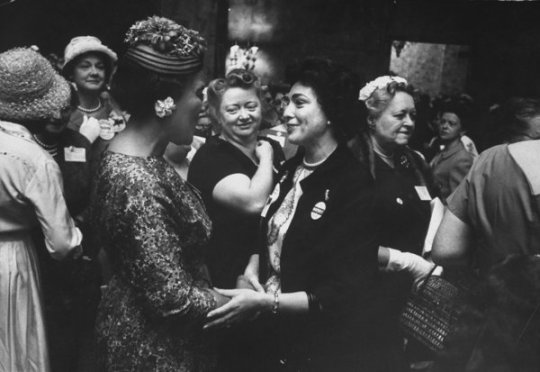
2 - Alaska: Blanche McSmith
Blanche McSmith (center left) was born in 1920 in Texas. After moving to Alaska in 1949, McSmith became president of the NAACP’s Anchorage branch. A decade later, Smith made history by becoming the first black representative in the Alaska legislature.

3 - Arizona: Dr. Rick Kittles
Dr. Rick Kittles is a highly renowned figure in the field of genetics, known for using DNA testing to explore the ancestry of African-Americans. He currently serves as Chair of Minorities in Cancer Research at the American Association for Cancer Research.
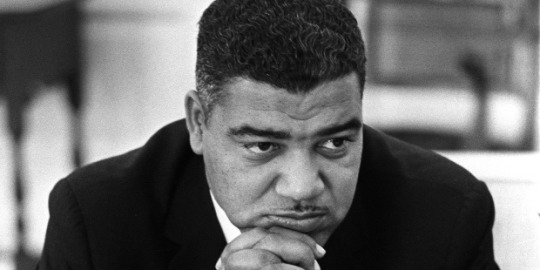
4 - Arkansas: John Cross, Jr.
John Cross Jr. was born in Haynes, Arkansas in 1925. In 1962, Cross became a pastor at the 16th Street Baptist Church in Birmingham, Alabama where civil rights activists would often convene. In 1963, the church was the site of a bomb by KKK members that killed four young girls. Cross became a leader for the grieving town by continuing his sermons and presiding over the three of the girls’ funerals.

5 - California: Octavia Butler
Octavia Butler, born in 1947 in Pasadena, California, was one of few black female sci-fi writers during the high point of her career in the 1970s. In 1995, her work was prestigiously rewarded when she became the first sci-fi author to receive the MacArthur fellowship or “genius grant.” With the money from the grant, Butler bought a home for her mother and herself.
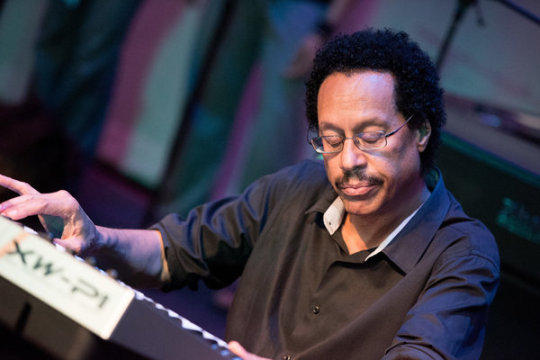
6 - Colorado: Larry Dunn
Larry Dunn, born in Denver, Colorado in 1953, was the keyboardist of Earth, Wind & Fire for 11 years. He helped create the band’s 1975 hit “Shining Star.”

7 - Connecticut: Adam Clayton Powell, Jr.
Adam Clayton Powell, Jr. was born in New Haven, Connecticut in 1908, but New York is where he made history. In 1945, Powell became the first black person to become a U.S. Representative for the state of New York. Many of the bills he proposed during his 15 years in office would eventually be included in the Civil Rights Act of 1965.

8 - Delaware: Clifford Brown
Born in Wilmington, Delaware in 1930, Clifford Brown was an accomplished jazz trumpeter who helped set the standard for the musicians who would succeed him. In 1989, the first Clifford Brown Jazz Festival, which remains an annual event, was held in Wilmington, Delaware to honor the late musician.

9 - Florida: Esther Rolle
From Broadway shows to the classic sitcom “Good Times,” Esther Rolle, born in 1920 in Pompano Beach, Florida, had a prominent acting career. Audiences loved Rolle’s character on TV sitcom “Maude,” so much so that the show’s producer Norman Lear created “Good Times” as a spinoff series in which Rolle would star.
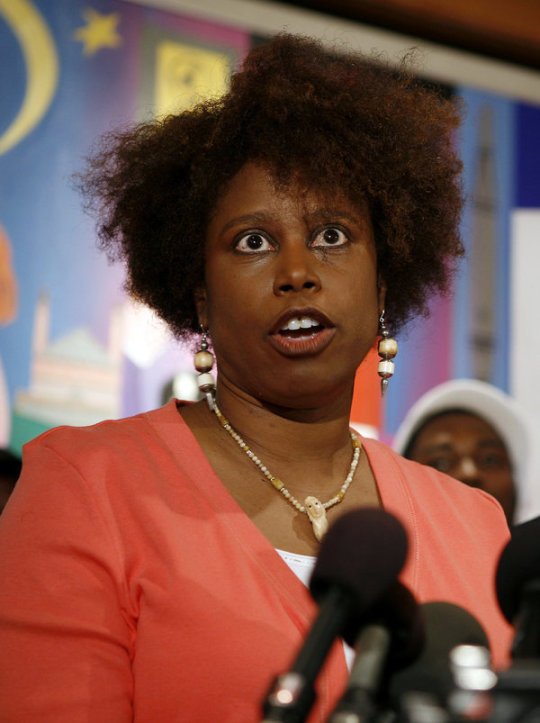
10 - Georgia: Cynthia McKinney
Born in 1955, Cynthia McKinney of Atlanta, Georgia, became the first black woman to represent the state in the U.S. House of Representatives in 1992.
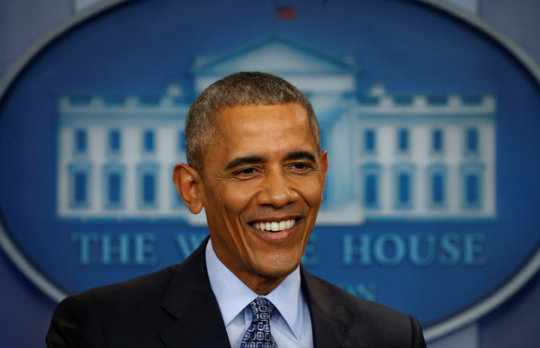
11 - Hawaii: Barack Obama
Born in 1961 in Honolulu, Hawaii, Barack Obama made history on November 4, 2008 when he was elected to become America’s first black president. His legacy has been an inspiration for citizens worldwide.

12 - Idaho: Victor Wooten
Born in Mountain Home, Idaho in 1964, Victor Wooten was a member of the jazz band Bela Fleck and the Flecktones before embarking on a career as a solo musician. Wooten is a five-time Grammy winning musician was voted one of the top bassists of all time by a Rolling Stone reader poll.
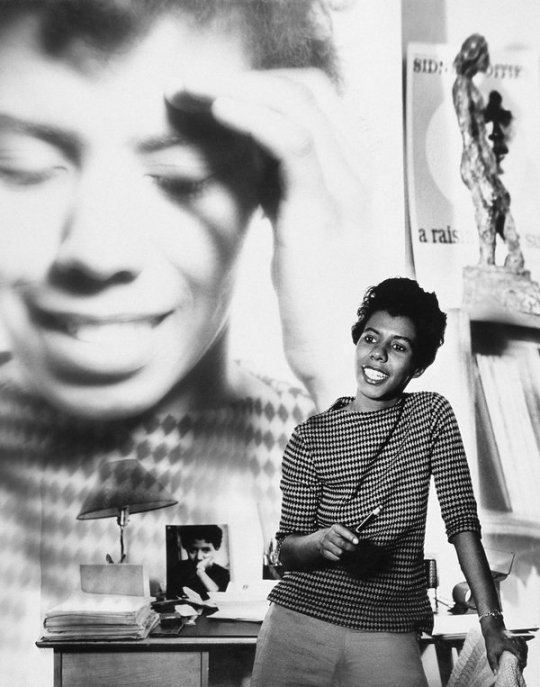
13 - Illinois: Lorraine Hansberry
Born in Chicago, Illinois in 1930, Lorraine Hansberry was the first black playwright to have their work staged on Broadway with “A Raisin In The Sun.” She was also the youngest American to receive a New York Critics Circle award.
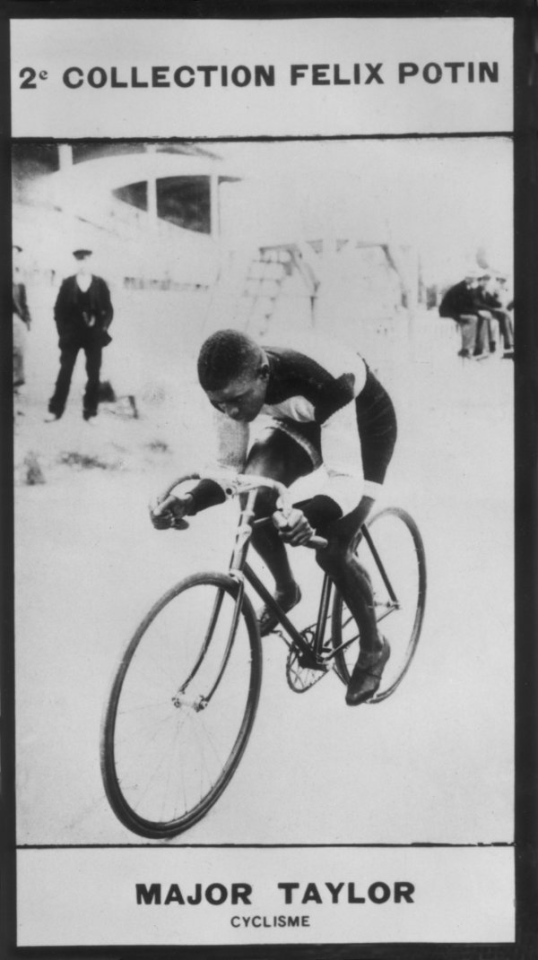
14 - Indiana: Major Taylor
Marshall Walter “Major” Taylor was born in 1878 in Indianapolis, Indiana. He was the first black person to become a champion in a sport and held seven world records by the time he retired at 32-years-old. He retired as one of the richest athletes in history.
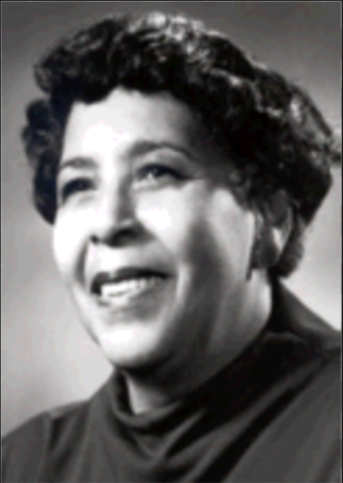
15 - Iowa: Charity Adams Earley
Although born in South Carolina in 1918, Charity Adams Earley made history in Fort Des Moines, Iowa when she became one of the first black female officers of the Women’s Army Corps. She later became the first black woman to be commissioned by the Women’s Army Auxiliary Corps.
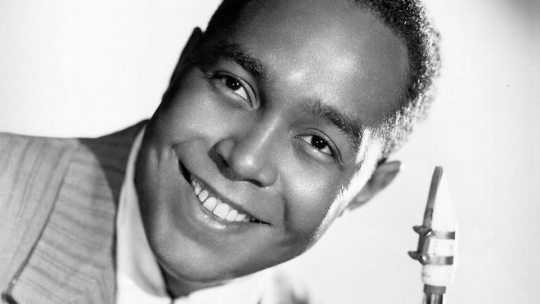
16 - Kansas: Charlie Parker
Indeed, “Bird Lives” in heart and mind in Kansas City where Charlie “Yardbird” Parker was born in 1920. Parker was a highly influential jazz soloist and a leading figure in the development of bebop, a form of jazz characterized by fast tempos, virtuosic technique and advanced harmonies. Parker was an icon for the hipster subculture and later the Beat Generation, personifying the jazz musician as an uncompromising artist and intellectual rather than just an entertainer.

17 - Kentucky: bell hooks
Born Gloria Jean Watkins in Hopkinsville, Kentucky in 1952, noted cultural scholar, award-winning author and black feminist who goes by the namesake of her great grandmother, bell hooks. In 2015, the bell hooks Institute was created at Berea college. The institute allows for a comprehensive study into hooks’ works and theories.
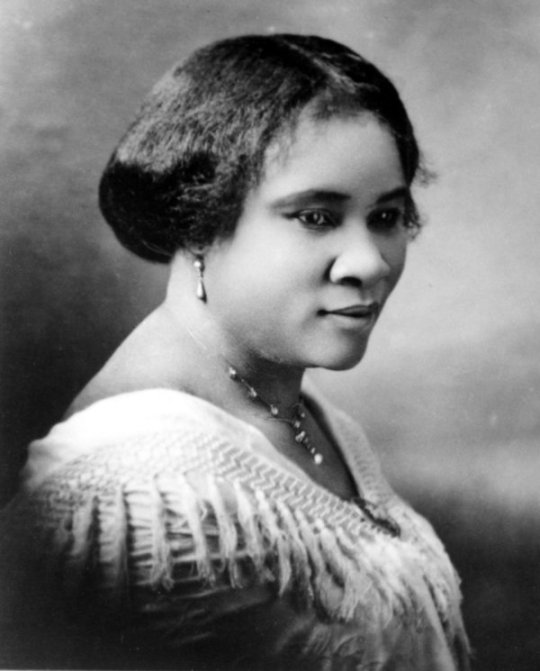
18 - Louisiana: Madam C.J. Walker
Born Sarah Breedlove in 1867 in Near Delta, Louisiana, Madam C.J. Walker epitomizes the term “self-made.” By inventing and selling hair products, Walker became first American woman to become a self-made millionaire. Walker created a hair routine that’s still popular among black women today referred to as the “Walker System.” Walker donated some of her money to black organizations like the NAACP and the black YMCA.

19 - Maine: William Burney
Born in Augusta, Maine in 1951, William Burney was elected the first black mayor of the town in 1988.
(Picture unavailable).
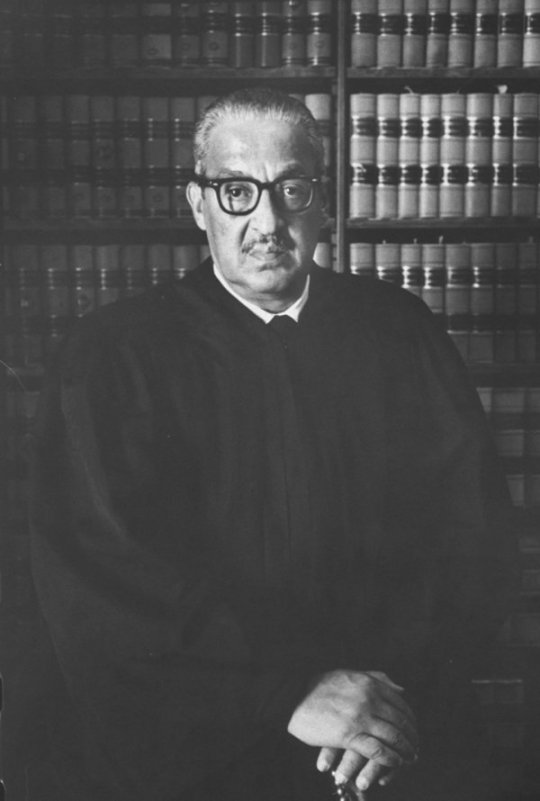
20 - Maryland: Thurgood Marshall
Thurgood Marshall was born in 1908 in Baltimore, Maryland. As NAACP Chief Counsel, in 1952, he took on the case of Brown vs. Board of Education (1954) on behalf of the plaintiffs. Marshall won the case, which deemed public school segregation to be unconstitutional. In 1967, Marshall would become an even more prolific figure by becoming the first black Supreme Court Justice.

21 - Massachusetts: Phillis Wheatley
Phillis Wheatley was born in Senegal in 1753 and sent overseas to Boston, Massachusetts where she would become a slave. While enslaved, Wheatley was constantly exposed to books. In 1773, she became the second woman and the first black person to have their poetry published.

22 - Michigan: Carole Anne-Marie Gist
Born in Detroit, Michigan in 1969, Carole Anne-Marie Gist made history when she became the first black Miss USA in 1990.

23 - Minnesota: Toni Stone
Born in 1921 in St. Paul, Minnesota, Toni Stone became the first woman to play in a professional men’s baseball league when she joined the San Francisco Sea Lions of the West Coast Negro Baseball Leagues in 1953. Stone endured endless acts of racial and gender-based discrimination.

24 - Mississippi: Fannie Lou Hamer
Born in 1917 in Montgomery County, Mississippi, Fannie Lou Hamer was a relentless civil rights advocate. Hamer endured arrests, assault and being shot at by racists upset by Hamer’s activism. Hamer made a notable speech at the 1964 Democratic National Convention on being black in America. She helped black citizens register to vote and created organizations to service minority families.

25 - Missouri: Maya Angelou
Born in 1921 in St. Louis, Missouri, Maya Angelou is a renowned, poet, author and civil rights activist. Her works such as “Still I Rise” and “I Know Why The Caged Bird Sings” have spanned generations. When close friend Dr. Martin Luther King, Jr. was assassinated on her birthday, Angelou went years without celebrating her April 4th birthday.

26 - Montana: Geraldine Travis
Born in 1931 in Albany, Georgia, Geraldine Travis became the first black person elected to be elected to Montana’s State Legislature in 1974. She worked to advance civil rights both in and outside of government.

27 - Nebraska: Malcolm X
Born Malcolm Little in 1925 in Omaha, Nebraska, Malcolm X was a fearless civil rights icon and a spokesman for the Nation of Islam. The X that replaced his last name was intended to serve as representation of the loss of his African identity. X was responsible for the popularity of the “any means necessary” philosophy which emphasizes going to any length to protect your rights.

28 - Nevada: Henry W. Lockerman
Henry W. Lockerman was a Porter of the Nevada State Senate in 1889. He was a civil war veteran who served in the 79th U.S.C.I. at Fort Scott, Kansas which was the first colored infantry unit in Kansas.
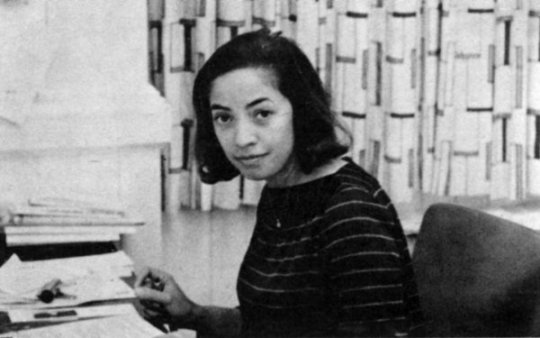
29 - New Hampshire: Myrna Adams
Myrna Adams made history at the University of New Hampshire by becoming the school’s first administrator in 1969 where she aided black students through financial aid and advisement.
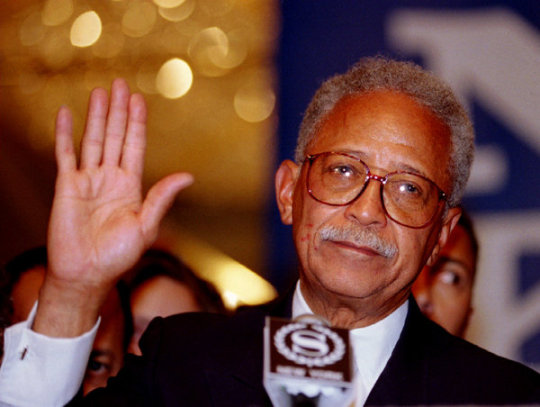
30 - New Jersey: David Dinkins
Born in 1927 in Trenton, New Jersey, Howard University alumnus David Dinkins became the first black mayor of New York City in 1989 beating opponent Rudy Giuliani and incumbent Ed Koch. Dinkins went on to teach at Columbia University and has a building named after him in Manhattan.
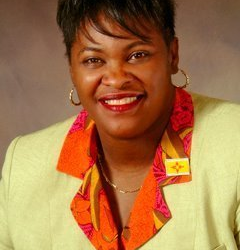
31 - New Mexico: Sheryl Williams Stapleton
Born in 1958 in Saint Croix in the U.S. Virgin Islands, Sheryl Williams Stapleton became the first black woman to serve as New Mexico Legislature’s floor leader in January 2017. She’s served as a State House representative for New Mexico’s 19th district in 1994.

32 - New York: James Baldwin
Born in Harlem in 1924, author James Baldwin’s prolific works like “Go Tell It On The Mountain” and “Giovanni’s Room” have become literary classics.

33 - North Carolina: Moms Mabley
Born in 1894 in Brevard, North Carolina, Moms Mabley’s success in the male-dominated world of comedy was rare. She was the first female comedian to perform at the Apollo theater and appeared in numerous movies. Her life would become the subject of an off-Broadway play as well as a documentary directed by Whoopi Goldberg.

34 - North Dakota: Rosemary Sauvageau
In 2012, Rosemary Sauvageau became the first black Miss North Dakota. Following two second place position in 2010 and 2011 pageants, Sauvageau, 24, persevered and resultantly, made history.

35 - Ohio: Dorothy Dandridge
Born in 1922 in Cleveland, Ohio, Dorothy Dandridge was an actress, singer and beauty icon. After starring in the 1954 film “Carmen Jones,” Dandridge became the first black woman to be nominated for an Academy Award for best actress.

36 - Oklahoma: Ralph Ellison
Born in 1914 in Oklahoma City, Oklahoma, novelist Ralph Ellison wrote the classic 1953 National Book Award winner in fiction “Invisible Man.” Ellison was awarded the Presidential Medal of Freedom in 1969.

37 - Oregon: Geraldine Avery
Geraldine Avery was the first black person to become a police matron in Oregon in 1954.
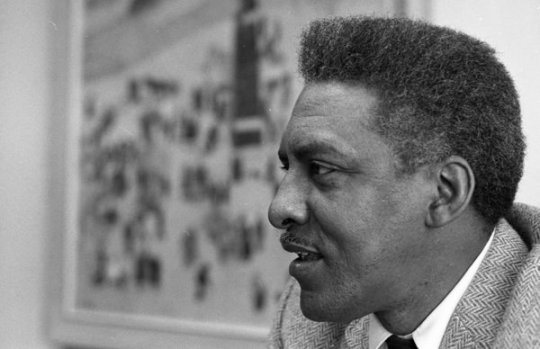
38 - Pennsylvania: Bayard Rustin
Born in 1912 in West Chester, Pennsylvania, the leader of numerous civil rights movements, Bayard Rustin was a much lesser-known civil rights organizer. Rustin, who was also openly gay, worked alongside Dr. Martin Luther King, Jr. and played a significant role in King’s commitment to non-violence.
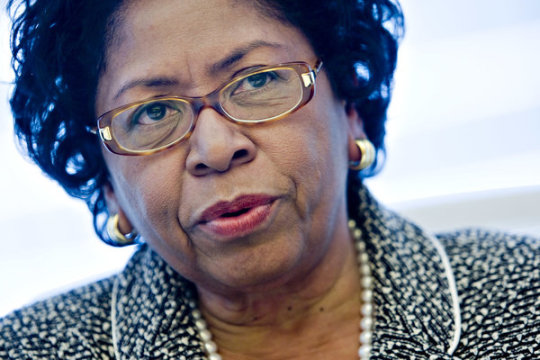
39 - Rhode Island: Ruth Simmons
Although from Texas, Ruth Simmons, born in 1945, made history in Providence, Rhode Island when she became the first black person to serve as president of Brown University in 2001. The presidency also made her the first black person to run an Ivy league University.
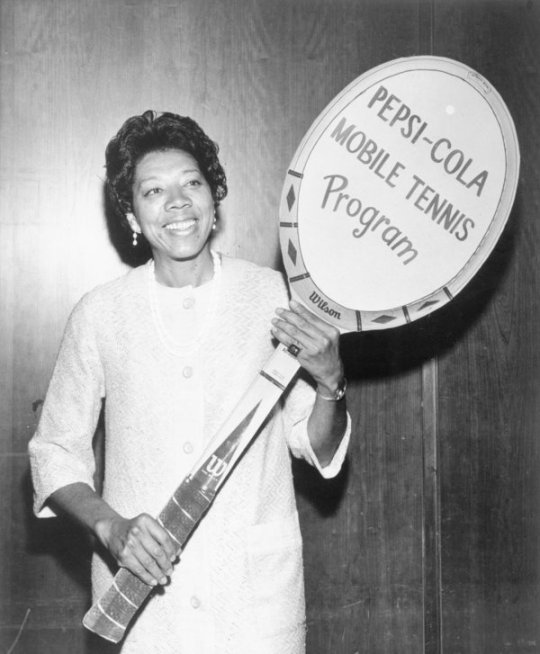
40 - South Carolina: Althea Gibson
After becoming the first black female professional tennis player, Althea Gibson, born in 1927 in Silver, South Carolina, would go on to become the first black person to hold a number of titles in the sport. She was the first black person to win Wimbledon and the French and U.S. Open.
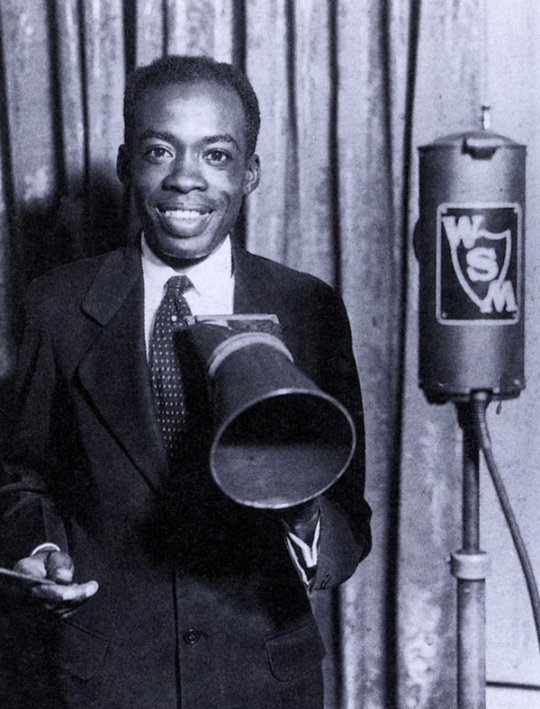
41 - Tennessee: DeFord Bailey
Born in 1899 in Smith County, Tennessee, DeFord Bailey was one of country music’s first black notable musicians. His harmonica skills landed him a permanent gig on a radio station until he eventually began recording and performing despite constantly facing racial discrimination.

42 - South Dakota: Oscar Micheaux
Although born in Illinois in 1884, Oscar Micheaux was living in South Dakota when he wrote the book that would serve as the basis for the first full-length feature film by a black filmmaker. Micheaux, who produced both silent and speaking films that appealed to black audiences, is considered the first black successful film director.

43 - Texas: Barbara Jordan
Born in 1936, in Houston, Texas, Barbara Jordan was the first black person and first woman to represent Texas in the U.S. Congress when she became a House Representative in 1973. Additionally, Jordan made a memorable opening speech at Richard Nixon’s impeachment just one year later. Although never very open about her sexuality, Jordan was in a domestic relationship with a woman for over two decades.

44 - Utah: Abner Leonard Howell
Abner Leonard Howell was born in 1877 in Louisiana but raised in Salt Lake City, Utah. Howell was a gifted collegiate football player who helped lead University of Michigan’s Wolverines team to success although he didn’t receive public acknowledgement for doing so.

45 - Vermont: Alexander Twilight
Born in 1795 in Corinth, Vermont, Alexander Twilight is believed to be the first American college graduate. He is also the first black person to serve in a U.S. state legislature after his 1836 election to the Vermont General Assembly.

46 - Virginia: Ella Fitzgerald
Born in 1917 in Newport News, Virginia, 13 time Grammy-winning jazz singer Ella Fitzgerald is known as “The First Lady of Song.” Fitzgerald left an abusive home at 15 years old and was forced to overcome the Depression by herself. Nonetheless, she had a remarkable career in music and went on to win the National Medal Of Arts by Ronald Reagan in 1987.

47 - Washington: Yolanda Gail Devers
Born in 1966 in Seattle, Washington, track and field athlete Yolanda Gail Devers was an avid runner during her childhood. But despite having to undergo a strenuous treatment program and facing the possibility of having her feet amputated after being diagnosed with Graves disease in 1990, Devers persevered. She went on to receive gold medals in the 1992 and 1996 Olympics’ track and field segments.

48 - West Virginia: Katherine G. Johnson
Born in 1918 in White Sulfur Springs, West Virginia, Katherine G. Johnson is just one-third of the trio of black women whose work with NASA in the 1950s inspired the movie “Hidden Figures.” Her stellar mathematical abilities would eventually play a crucial role in the first successful space exploration by an American. She was awarded the Presidential Medal of Freedom in 2015 by Barack Obama.
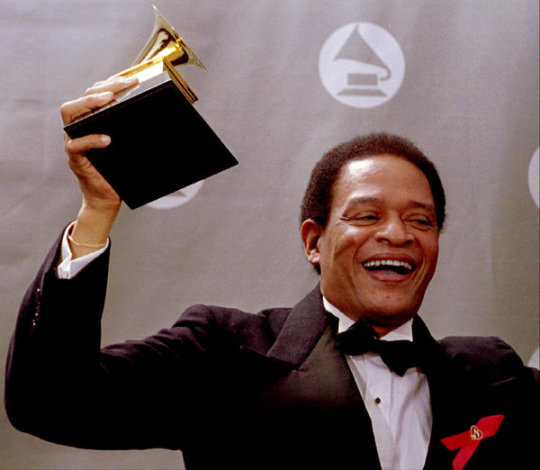
49 - Wisconsin: Al Jarreau
Born Alwin Lopez Jarreau in Milwaukee, Wisconsin in 1940, the actor and singer was the first vocalist to earn three Grammys in three different categories. Jarreau earned three of his six Grammys in pop, jazz and R&B.
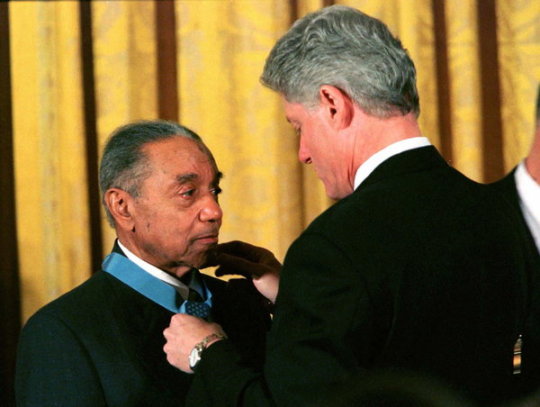
50 - Wyoming: Vernon Baker
Born in Cheyenne, Wyoming in 1919, Vernon Baker was the only living black WWII veteran to be awarded the Congressional Medal of Honor for his military service. He received the award in January 1997 from then-President Bill Clinton.
source: huffingtonpost.com
4K notes
·
View notes
Photo



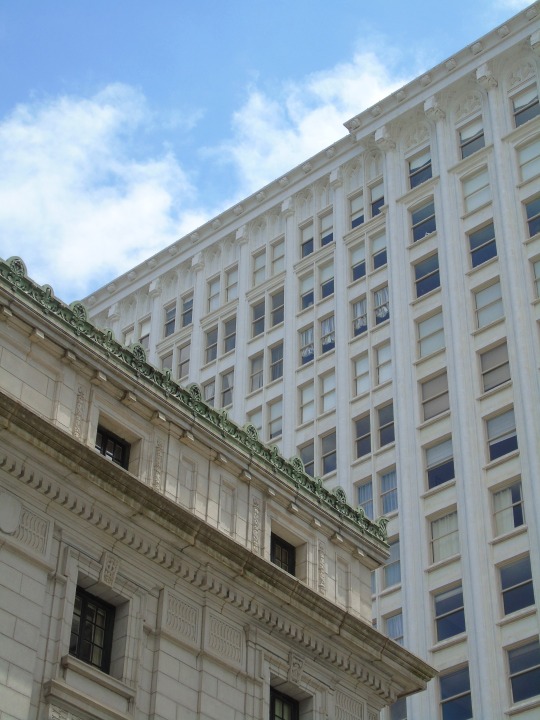
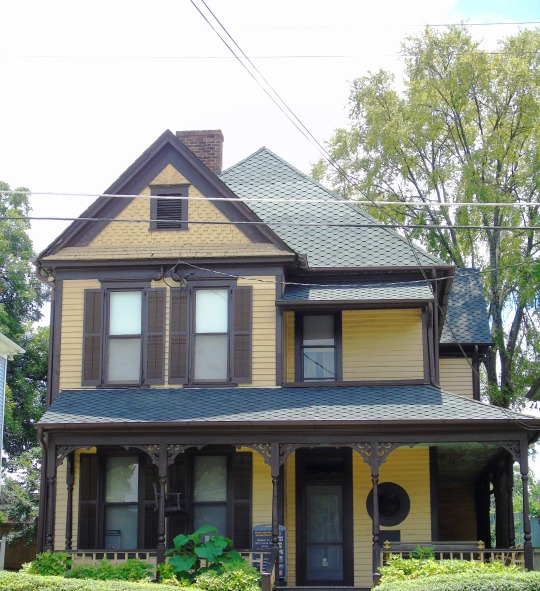





The Great Atlanta fire of 1917 (21st May) caused $5.5 million in damages, destroying some 300 acres including 2,000 homes, businesses and churches, displacing about 10,000 people but leading to only one fatality (due to heart attack).
#Great Atlanta fire of 1917#21 May 1917#105th anniversary#US history#USA#travel#summer 2016#original photography#architecture#cityscape#Georgia#Atlanta#Centennial Olympic Park#tourist attraction#landmark#Martin Luther King Jr. National Historical Park#free admission#vacation#Martin Luther King Jr. Center for Nonviolent Social Change#Ebenezer Baptist Church#World of Coca Cola#Bank of America Plaza#Fountain of Rings
1 note
·
View note
Text
Events 5.21
293 – Roman Emperors Diocletian and Maximian appoint Galerius as Caesar to Diocletian, beginning the period of four rulers known as the Tetrarchy.
878 – Syracuse, Sicily, is captured by the Muslim Aghlabids after a nine-month siege.
879 – Pope John VIII gives blessings to Branimir of Croatia and to the Croatian people, considered to be international recognition of the Croatian state.
996 – Sixteen-year-old Otto III is crowned Holy Roman Emperor.
1349 – Dušan's Code, the constitution of the Serbian Empire, is enacted by Dušan the Mighty.
1403 – Henry III of Castile sends Ruy González de Clavijo as ambassador to Timur to discuss the possibility of an alliance between Timur and Castile against the Ottoman Empire.
1554 – Queen Mary I grants a royal charter to Derby School, as a grammar school for boys in Derby, England.
1659 – In the Concert of The Hague, the Dutch Republic, the Commonwealth of England and the Kingdom of France set out their views on how the Second Northern War should end.
1660 – The Battle of Long Sault concludes after five days in which French colonial militia, with their Huron and Algonquin allies, are defeated by the Iroquois Confederacy.
1674 – The nobility elect John Sobieski King of Poland and Grand Duke of Lithuania.
1703 – Daniel Defoe is imprisoned on charges of seditious libel.
1725 – The Order of St. Alexander Nevsky is instituted in Russia by Empress Catherine I. It would later be discontinued and then reinstated by the Soviet government in 1942 as the Order of Alexander Nevsky.
1758 – Ten-year-old Mary Campbell is abducted in Pennsylvania by Lenape during the French and Indian War. She is returned six and a half years later.
1792 – A lava dome collapses on Mount Unzen, near the city of Shimbara on the Japanese island of Kyūshū, creating a deadly tsunami that killed nearly 15,000 people.
1809 – The first day of the Battle of Aspern-Essling between the Austrian army led by Archduke Charles and the French army led by Napoleon I of France sees the French attack across the Danube held.
1851 – Slavery in Colombia is abolished.
1856 – Lawrence, Kansas is captured and burned by pro-slavery forces.
1863 – American Civil War: The Union Army succeeds in closing off the last escape route from Port Hudson, Louisiana, in preparation for the coming siege.
1864 – Russia declares an end to the Russo-Circassian War and many Circassians are forced into exile. The day is designated the Circassian Day of Mourning.
1864 – American Civil War: The Battle of Spotsylvania Court House ends.
1864 – The Ionian Islands reunite with Greece.
1871 – French troops invade the Paris Commune and engage its residents in street fighting. By the close of "Bloody Week", some 20,000 communards have been killed and 38,000 arrested.
1871 – Opening of the first rack railway in Europe, the Rigi Bahnen on Mount Rigi.
1879 – War of the Pacific: Two Chilean ships blocking the harbor of Iquique (then belonging to Peru) battle two Peruvian vessels in the Battle of Iquique.
1881 – The American Red Cross is established by Clara Barton in Washington, D.C.
1894 – The Manchester Ship Canal in the United Kingdom is officially opened by Queen Victoria, who later knights its designer Sir Edward Leader Williams.
1904 – The Fédération Internationale de Football Association (FIFA) is founded in Paris.
1911 – President of Mexico Porfirio Díaz and the revolutionary Francisco Madero sign the Treaty of Ciudad Juárez to put an end to the fighting between the forces of both men, concluding the initial phase of the Mexican Revolution.
1917 – The Imperial War Graves Commission is established through royal charter to mark, record, and maintain the graves and places of commemoration of the British Empire's military forces.
1917 – The Great Atlanta fire of 1917 causes $5.5 million in damages, destroying some 300 acres including 2,000 homes, businesses and churches, displacing about 10,000 people but leading to only one fatality (due to heart attack).
1924 – University of Chicago students Richard Loeb and Nathan Leopold, Jr. murder 14-year-old Bobby Franks in a "thrill killing".
1927 – Charles Lindbergh touches down at Le Bourget Field in Paris, completing the world's first solo nonstop flight across the Atlantic Ocean.
1932 – Bad weather forces Amelia Earhart to land in a pasture in Derry, Northern Ireland, and she thereby becomes the first woman to fly solo across the Atlantic Ocean.
1934 – Oskaloosa, Iowa, becomes the first municipality in the United States to fingerprint all of its citizens.
1936 – Sada Abe is arrested after wandering the streets of Tokyo for days with her dead lover's severed genitals in her handbag. Her story soon becomes one of Japan's most notorious scandals.
1937 – A Soviet station, North Pole-1, becomes the first scientific research settlement to operate on the drift ice of the Arctic Ocean.
1939 – The Canadian National War Memorial is unveiled by King George VI and Queen Elizabeth in Ottawa, Ontario, Canada.
1946 – Physicist Louis Slotin is fatally irradiated in a criticality incident during an experiment with the demon core at Los Alamos National Laboratory.
1951 – The opening of the Ninth Street Show, otherwise known as the 9th Street Art Exhibition: A gathering of a number of notable artists, and the stepping-out of the post war New York avant-garde, collectively known as the New York School.
1961 – American civil rights movement: Alabama Governor John Malcolm Patterson declares martial law in an attempt to restore order after race riots break out.
1966 – The Ulster Volunteer Force declares war on the Irish Republican Army in Northern Ireland.
1969 – Civil unrest in Rosario, Argentina, known as Rosariazo, following the death of a 15-year-old student.
1972 – Michelangelo's Pietà in St. Peter's Basilica in Rome is damaged by a vandal, the mentally disturbed Hungarian geologist Laszlo Toth.
1976 – Twenty-nine people are killed in the Yuba City bus disaster in Martinez, California.
1979 – White Night riots in San Francisco following the manslaughter conviction of Dan White for the assassinations of George Moscone and Harvey Milk.
1981 – The Italian government releases the membership list of Propaganda Due, an illegal pseudo-Masonic lodge that was implicated in numerous Italian crimes and mysteries.
1981 – Transamerica Corporation agrees to sell United Artists to Metro-Goldwyn-Mayer for $380 million after the box office failure of the 1980 film Heaven's Gate.
1982 – Falklands War: A British amphibious assault during Operation Sutton leads to the Battle of San Carlos.
1988 – Margaret Thatcher holds her controversial Sermon on the Mound before the General Assembly of the Church of Scotland.
1991 – Former Indian Prime Minister Rajiv Gandhi is assassinated by a female suicide bomber near Madras.
1991 – Mengistu Haile Mariam, president of the People's Democratic Republic of Ethiopia, flees Ethiopia, effectively bringing the Ethiopian Civil War to an end.
1992 – After 30 seasons Johnny Carson hosted his penultimate episode and last featuring guests (Robin Williams and Bette Midler) of The Tonight Show.
1994 – The Democratic Republic of Yemen unsuccessfully attempts to secede from the Republic of Yemen; a war breaks out.
1996 – The ferry MV Bukoba sinks in Tanzanian waters on Lake Victoria, killing nearly 1,000.
1998 – In Miami, five abortion clinics are attacked by a butyric acid attacker.
1998 – President Suharto of Indonesia resigns following the killing of students from Trisakti University earlier that week by security forces and growing mass protests in Jakarta against his ongoing corrupt rule.
2000 – Nineteen people are killed in a plane crash in Wilkes-Barre, Pennsylvania.
2001 – French Taubira law is enacted, officially recognizing the Atlantic slave trade and slavery as crimes against humanity.
2003 – The 6.8 Mw Boumerdès earthquake shakes northern Algeria with a maximum Mercalli intensity of X (Extreme). More than 2,200 people were killed and a moderate tsunami sank boats at the Balearic Islands.
2005 – The tallest roller coaster in the world, Kingda Ka opens at Six Flags Great Adventure in Jackson Township, New Jersey.
2006 – The Republic of Montenegro holds a referendum proposing independence from the State Union of Serbia and Montenegro; 55% of Montenegrins vote for independence.
2010 – JAXA, the Japan Aerospace Exploration Agency, launches the solar-sail spacecraft IKAROS aboard an H-IIA rocket. The vessel would make a Venus flyby late in the year.
2011 – Radio broadcaster Harold Camping predicted that the world would end on this date.
2012 – A bus accident near Himara, Albania kills 13 people and injures 21 others.
2012 – A suicide bombing kills more than 120 people in Sana'a, Yemen.
2014 – Random killings occurred on the Bannan Line of the Taipei MRT, killing four and injuring 24.
2017 – Ringling Bros. and Barnum & Bailey Circus performed their final show at Nassau Veterans Memorial Coliseum.
0 notes
Text
Great Atlanta Fire #OnThisDay May 21 1917
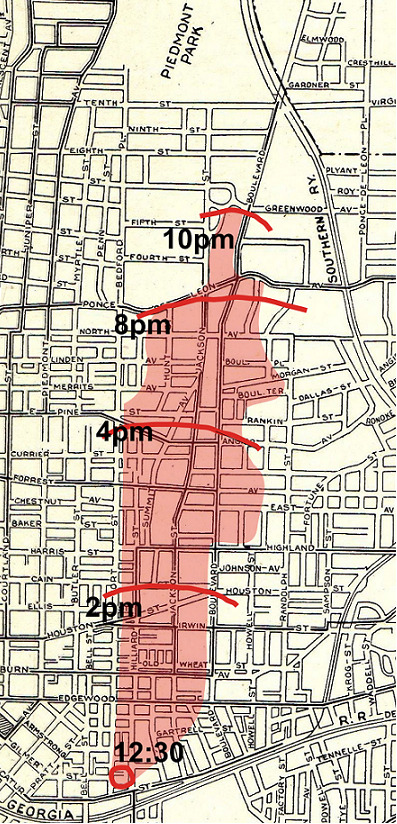
Great Atlanta Fire #OnThisDay May 21 1917
Fire burned for nearly 10 hours
Firefighters used dynamite to stop the fire
Damages amounted to $5.5 million ($103 million in 2017)
300 acres & 2,000 homes destroyed
Only one person died
23 notes
·
View notes
Photo

#Repost @atlantacityflag ・・・ New #flag #design by Alan Hardy. "Bold, full height progression of the golden Atlanta Phoenix across a cobalt blue field that represents the Chattahoochee River, freedom, trust and fortitude in the face of danger. The splash of hot red represents the Great Atlanta Fire of 21st May 1917 which killed a person, destroyed 1,938 buildings and displaced 10,000 people." (at Atlanta, Georgia)
2 notes
·
View notes
Text
About Atlanta, Georgia
Atlanta, capital of the state of Georgia, is in almost all respects the principal centre of the American South. It lies in the foreland of the southern foothills of the Piedmont Plateau, on the watershed between the Gulf of Mexico and the Atlantic.The city was originally planned as a railway junction, and rapidly developed into an important commercial town. In recent years it has become a major economic and cultural centre in the American southeast and an important hub of air traffic. Internationally famed businesses, including Coca-Cola and CNN, have their headquarters here. Those visiting Atlanta should not expect to find a romantic southern city, but rather a large and vibrant American city with southern charm.
History
A military outpost was established in 1814 in the Indian village of Standing Peachtrees on the east bank of the Chattahoochee River, and in 1837 this became the terminus of the Western and Atlantic Railroad. The settlement that grew up was at first known simply as Terminus. Then, in 1843, it was renamed Marthasville in honour of the daughter of the then governor. Only two years later, in 1845, it was given its present name of Atlanta. During the Civil War it was an important Confederate stronghold, supply base and hospital centre. In 1864 the Union General William Sherman, noted for his ruthless conduct of the war, captured the town and reduced it to rubble. These events were described by Margaret Mitchell in her best-selling novel "Gone with the Wind", which won her the Pulitzer Prize.
In 1868 Atlanta became capital of the young state of Georgia. In 1886 the soft drink with the largest world sales was created in Atlanta. Large areas of the city were destroyed by a great fire in 1917. In 1929 Martin Luther King was born in Atlanta. After the Second World War Atlanta enjoyed a huge economic upswing.
Climate
The climate in Atlanta is humid subtropical with hot, humid summers and mild winters. The city receives abundant rainfall which is common in the southeastern states. There are lots of things to see and do in Atlanta, from the arts to sports, history, and other entertainment. Highlights are the World of Coca-Cola, the Georgia Aquarium, and numerous museums.
2 notes
·
View notes